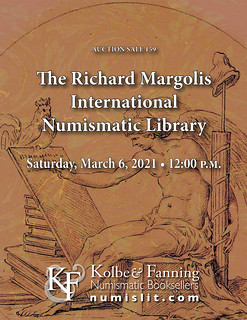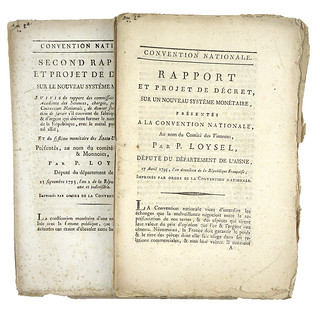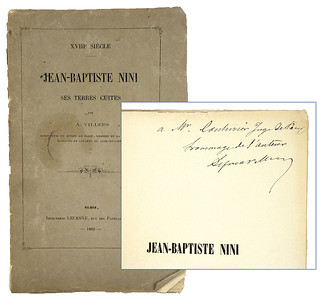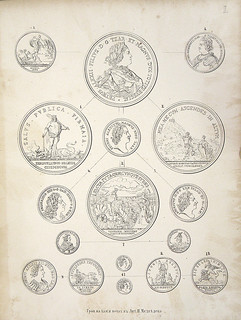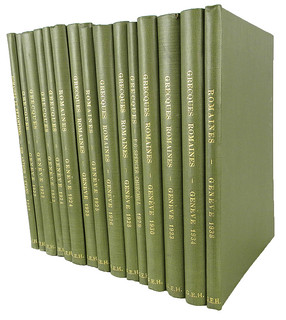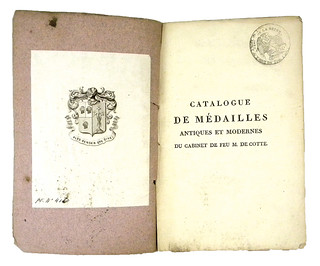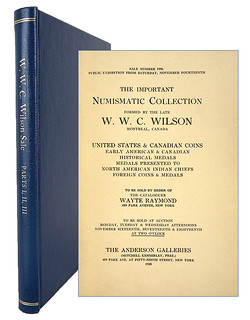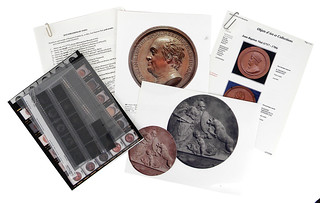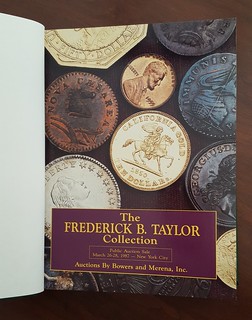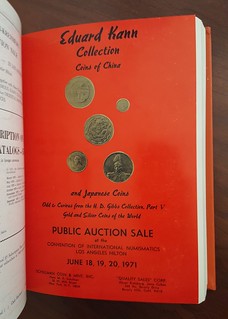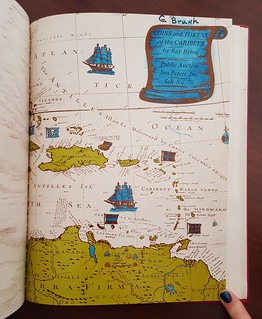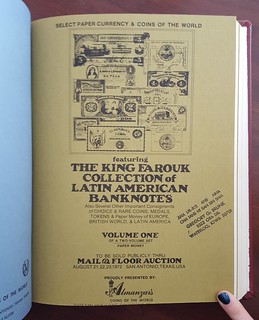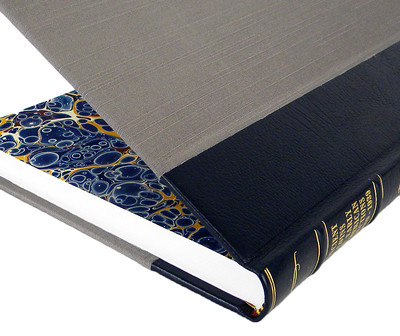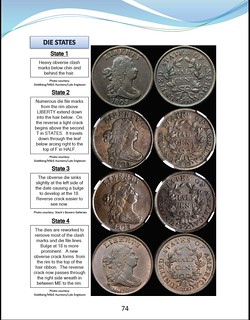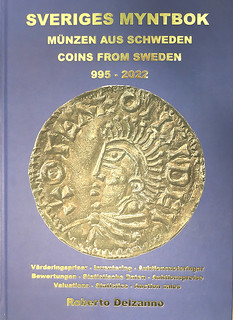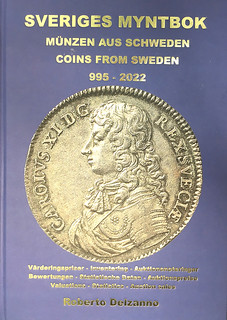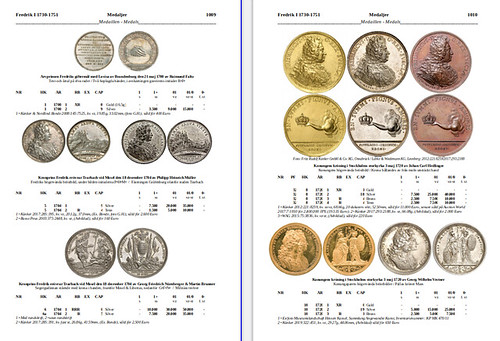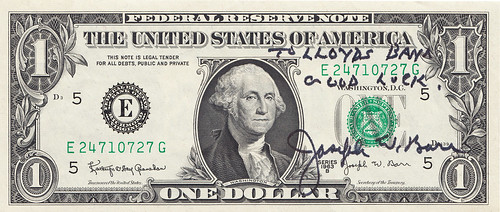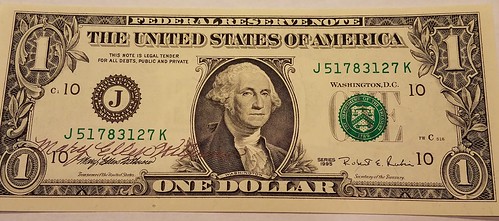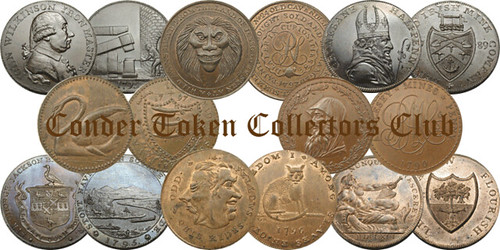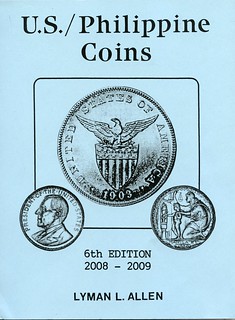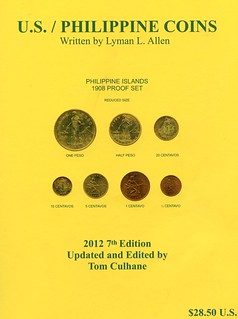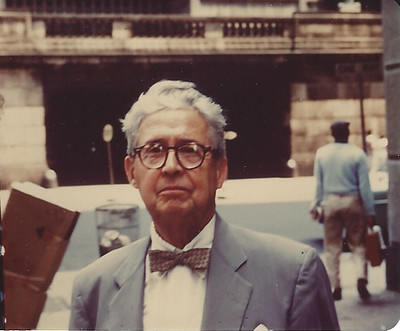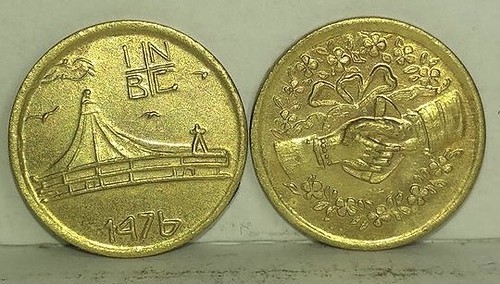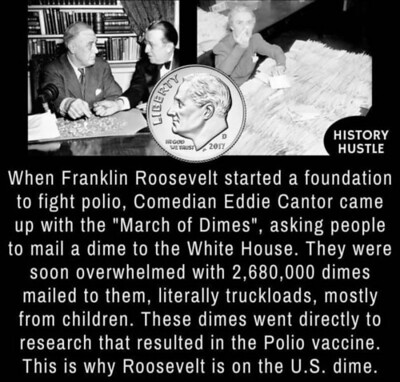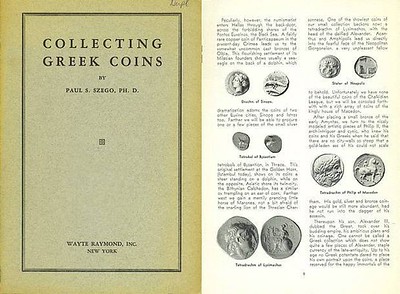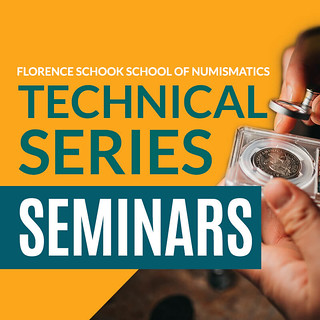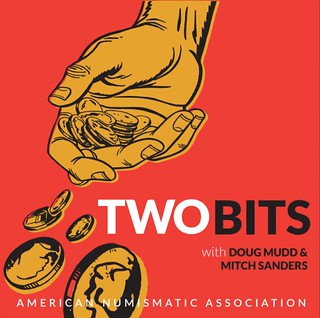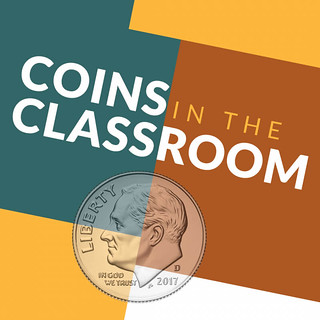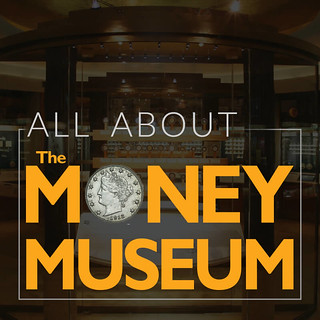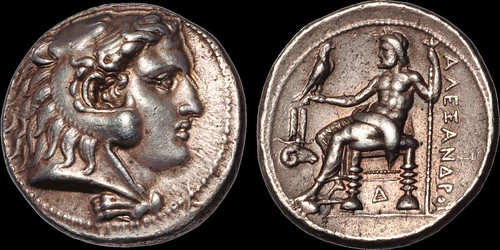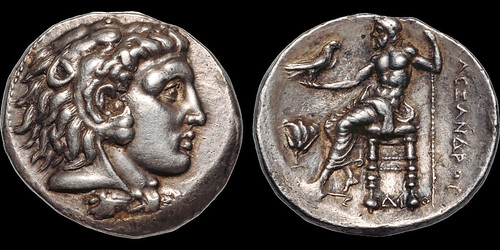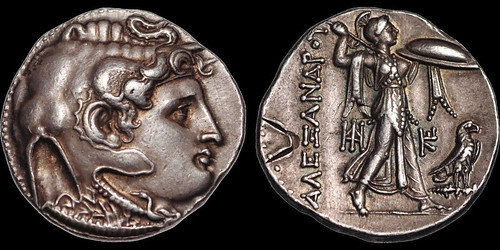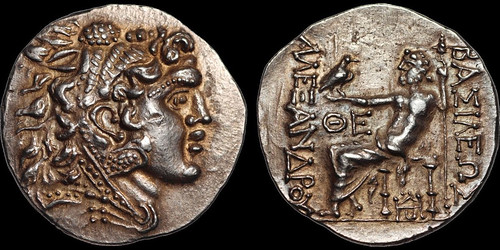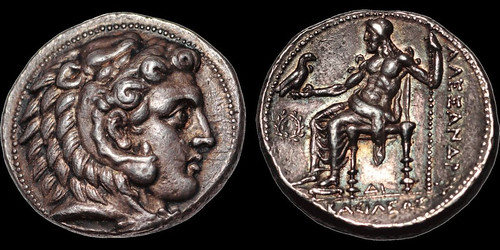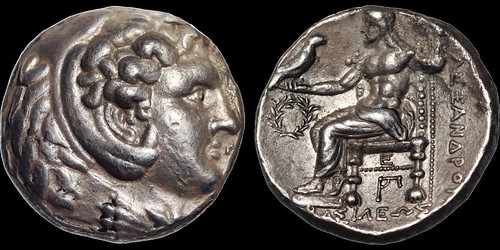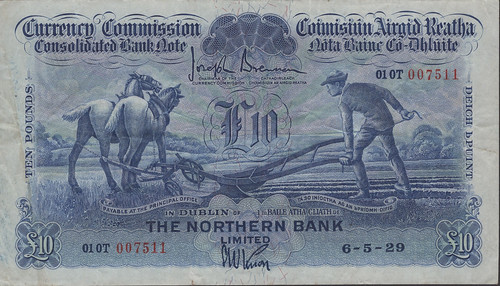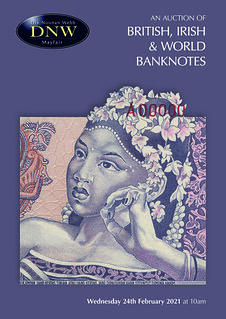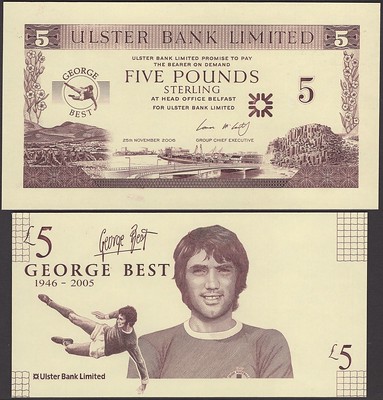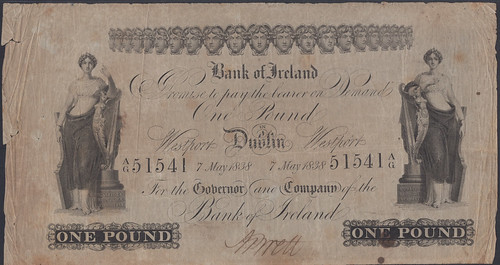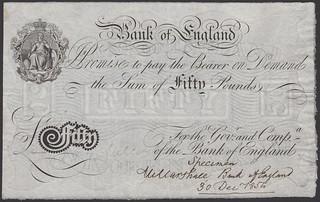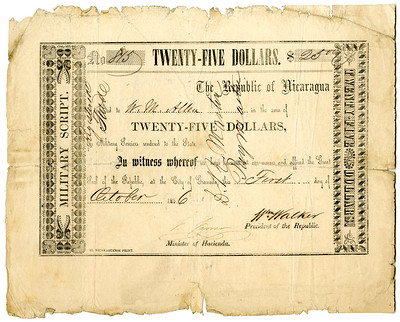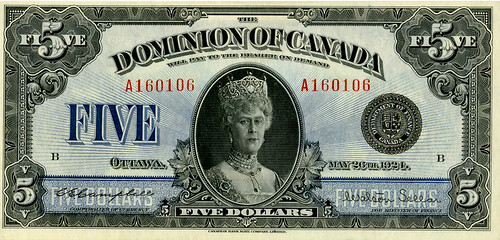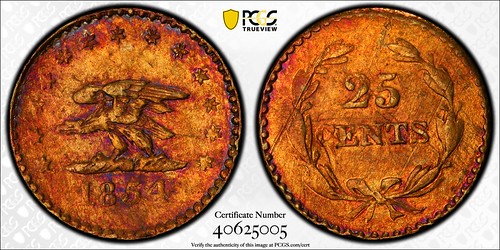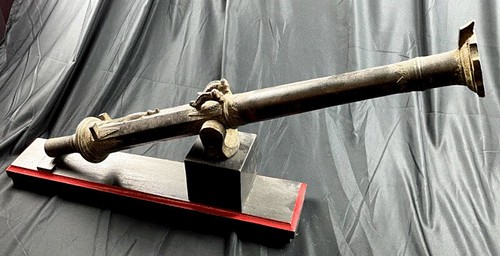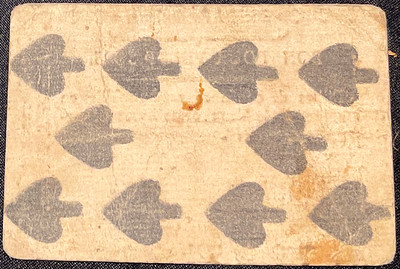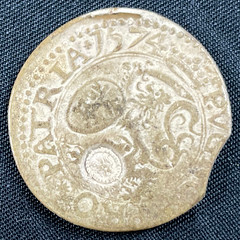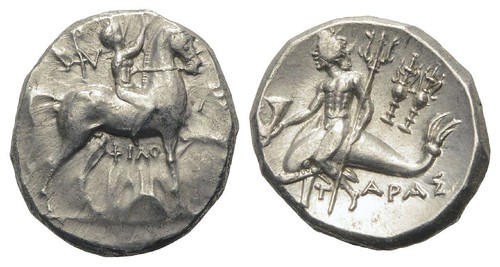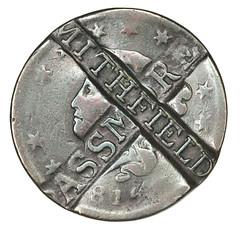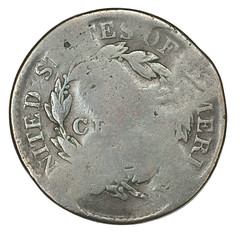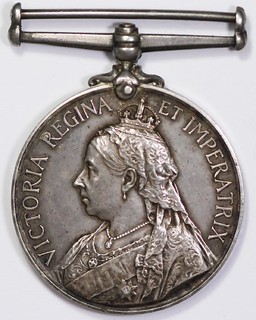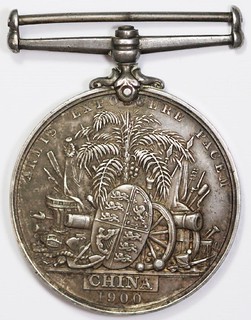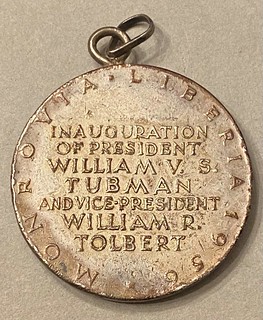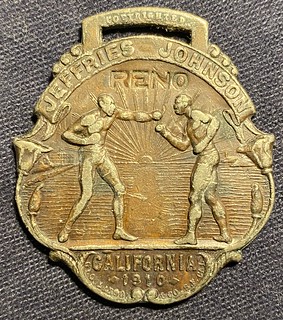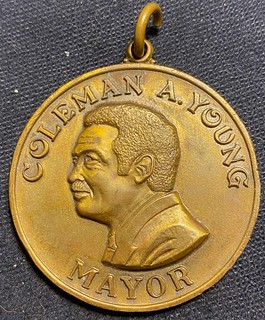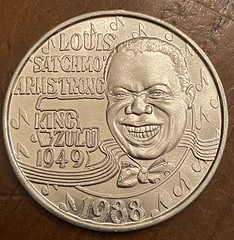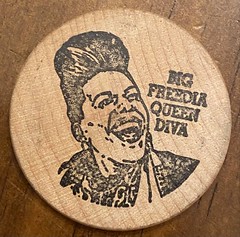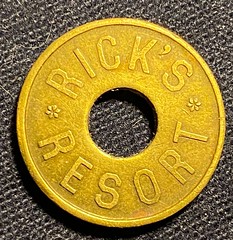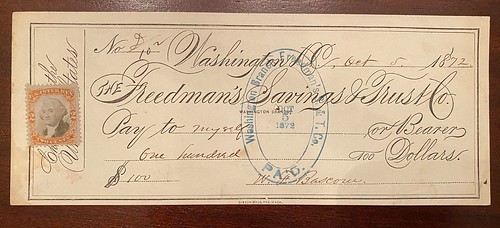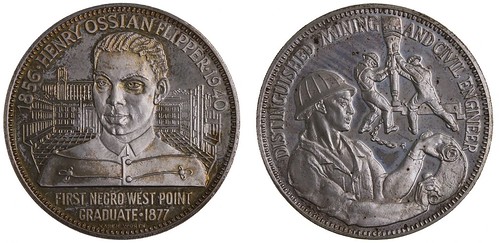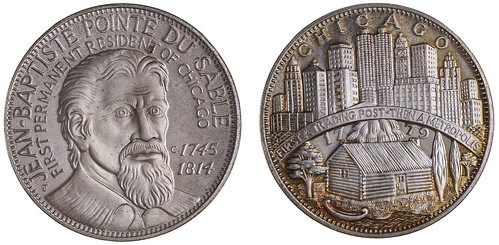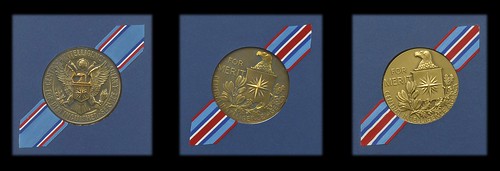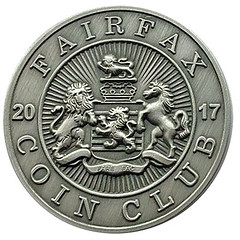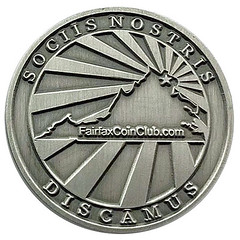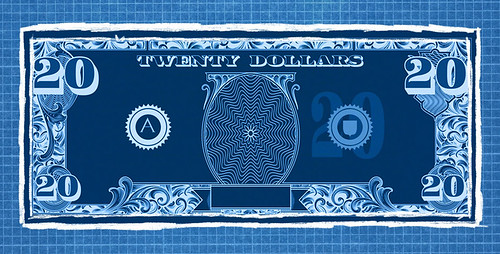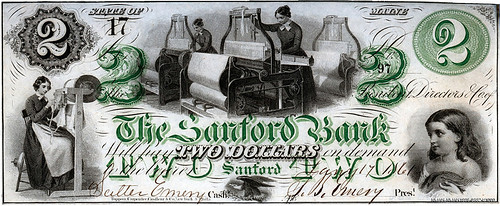
Visit our NBS Sponsors


About UsThe Numismatic Bibliomania Society is a non-profit association devoted to the study and enjoyment of numismatic literature. For more information please see our web site at coinbooks.org SubscriptionsThose wishing to become new E-Sylum subscribers (or wishing to Unsubscribe) can go to the following web page link MembershipThere is a membership application available on the web site Membership Application To join, print the application and return it with your check to the address printed on the application. Print/Digital membership is $40 to addresses in the U.S., and $60 elsewhere. A digital-only membership is available for $25. For those without web access, write to: Charles Heck, Treasurer AsylumFor Asylum mailing address changes and other membership questions, contact Chuck at this email address: treasurer@coinbooks.org SubmissionsTo submit items for publication in The E-Sylum, write to the Editor at this address: whomren@gmail.com BUY THE BOOK BEFORE THE COINSale Calendar |
- WAYNE'S WORDS: THE E-SYLUM FEBRUARY 21, 2021
- ASYLUM SPRING 2021 ISSUE PUBLISHED
- MORE KOLBE & FANNING MARGOLIS HIGHLIGHTS
- BRYCE BROWN CATALOG INVENTORY UPDATED
- DELUXE ANCIENT COINS IN AMERICAN AUCTIONS
- NEW BOOK: THE HALF CENT HANDBOOK
- NEW BOOK: COINS FROM SWEDEN 995-2022
- NEW BOOK: MAKING CHANGE
- PERIODICAL: THE CHOPMARK NEWS DECEMBER 2020
- JAMES C. RUEHRMUND (1926-2021)
- GENE HYNDS (1931-2021)
- THOMAS JEFFERSON'S COIN COLLECTION
- VIDEO: ELLSWORTH AT 2021 HOUSTON MONEY SHOW
- RED BOOK MODERN COMMEMORATIVE COVERAGE
- GREAT NUMISMATIC THEFTS
- TREASURY OFFICIAL COURTESY AUTOGRAPH NOTES
- NOTES FROM E-SYLUM READERS: FEBRUARY 21, 2021
- QUERY: DEALER PAUL S. SZEGO
- COLLECTING CENTS AND HALF CENTS IN 1874
- WHITMAN JUNE 2021 BALTIMORE EXPO CANCELLED
- VOCABULARY TERM: COPIES AND REPLICAS
- WILLIAM STEPHEN DISBROW, MD, PH. G. (1861-1922)
- GIVING BACK TO THE HOBBY WE LOVE
- THE ANS IS SEEKING A DEPUTY DIRECTOR
- ALEXANDER TETRADRACHMS: DAVISSON AUCTION 40
- DNW WORLD BANKNOTE SALE FEBRUARY 2021
- ARCHIVES INTERNATIONAL AUCTION 65
- SELECTIONS FROM KAGIN'S MARCH 2021 SALE
- NUMISMATIC NUGGETS: FEBRUARY 21, 2021
- THE LIBERIAN EXODUS
- NEGRO COMMEMORATIVE SOCIETY MEDALS
- CIA MEDALS HIDDEN IN PICTURE FRAME
- FAIRFAX COIN CLUB MEDAL
- THE HISTORY OF REDESIGNING AMERICA'S MONEY
- SMITHSONIAN TO EXHIBIT TENINO'S WOODEN MONEY
- READERS LOVE THE LIBBY APP
- LOOSE CHANGE: FEBRUARY 21, 2021
Click here to read the thin version on the web
Click here to subscribe
Click here to access the complete archive
To comment or submit articles, reply to whomren@gmail.com
Content presented in The E-Sylum is not necessarily researched or independently fact-checked, and views expressed do not necessarily represent those of the Numismatic Bibliomania Society.
WAYNE'S WORDS: THE E-SYLUM FEBRUARY 21, 2021
 New subscribers this week include:
Anca Untu, courtesy Chester Sullivan;
Ed Fuhrman,
Keith Poole, and
Dan Tumolo.
Welcome aboard! We now have 6,615 subscribers.
New subscribers this week include:
Anca Untu, courtesy Chester Sullivan;
Ed Fuhrman,
Keith Poole, and
Dan Tumolo.
Welcome aboard! We now have 6,615 subscribers.
Thank you for reading The E-Sylum. If you enjoy it, please send me the email addresses of friends you think may enjoy it as well and I'll send them a subscription. Contact me at whomren@gmail.com anytime regarding your subscription, or questions, comments or suggestions about our content.
This week we open with updates from NBS, a dealer fixed price list, four new books, a periodical, two obituaries, updates from the Newman Numismatic Portal, and more.
Other topics this week include Thomas Jefferson's coin collection, modern commemeratives, numismatic thefts, collecting cents and half cents, copies and replicas, auction previews, numismatics in Black History, CIA medals, and Tenino's wooden money.
To learn more about coins minted by the Knights in Malta, Ars Classica sales, Swedish coins, Gene Hynds, Pietro Giampaoli, Paul S. Szego, the U.S. Branch Mint in Manila, Mardi Gras doubloons, Alexander tetradrachms, world banknotes, playing card money, and Big Freedia, read on. Have a great week, everyone!
Wayne Homren
Editor, The E-Sylum
ASYLUM SPRING 2021 ISSUE PUBLISHED
Spring is here! Spring is here! Well, at least the Spring issue of The Asylum is on the way from our sponsor, the Numismatic Bibliomania Society. Maria Fanning edits our print journal, and she submitted these society updates from the latest issue. Thanks! Looking forward to it. -Editor
Message from the NBS President Tom Harrison
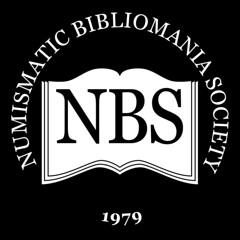 Welcome to the spring 2021 issue of The Asylum. I was saddened to hear of the passing of our friend Syd Martin who served on the NBS Board since 2009. Syd was a staunch supporter of the NBS and will be missed by the many people he touched throughout the numismatic community.
Welcome to the spring 2021 issue of The Asylum. I was saddened to hear of the passing of our friend Syd Martin who served on the NBS Board since 2009. Syd was a staunch supporter of the NBS and will be missed by the many people he touched throughout the numismatic community.
The NBS Constitution requires a call for nominations for officers and board members during the first quarter of odd numbered years. If you have a desire to serve, please send a brief bio and portrait photo via email to Maria Fanning at nbsasylum@gmail.com by May 1st so you can be placed on the ballot to be mailed with the summer issue of The Asylum. You may contact me at president@coinbooks.org with any questions about serving on the board.
The most recent NBS Bibliotalk, "Special Collections and Art Books," features Cassie Brand, Curator of Rare Books at Olin Library, Washington University in St. Louis. This is another entertaining and informative discussion reflecting the passion of a true book enthusiast. It and all of the previous podcasts can be accessed at the NBS website at coinbooks.org. Thank you to everyone who has contributed to the success of Bibliotalk!
May your numismatic library provide investigation, discovery and, most of all, enjoyment.
Table of Contents
 Syd Martin: A Few Notes and Memories by David F. Fanning
Syd Martin: A Few Notes and Memories by David F. Fanning
The Clain-Stefanelli Festschrift: A Case Study in Biblio-Gestation by Leonard Augsburger
The Largest and Smallest Books In My Library by Ken Bressett
The Evolution of a Small Numismatic Book by William E. Daehn
A Fascinating Armand Champa Inscription by Cole Hendrickson
Woodward's 96th Sale by David Hirt
The Curious Evolution of a Classic Numismatic Reference by Charles Sullivan
Evans and Smith by Pete Smith
Book Review: Coins Minted by the Knights in Malta by John Gatt by William VanOrnum
A Selected Bibliography of Published Numismatic Works by Richard Margolis by David F. Fanning
NBS Board Election
We are also calling for nominations to our NBS Board of Trustees for the 2021–2023 term, so if you are interested in serving your fellow numismatic bibliomaniacs please send a brief bio (1-2 paragraphs) and photo to
asylum@coinbooks.org by May 1 to be included with the election information. Please contact NBS President Tom Harrison at
president@coinbooks.org with any questions about serving on the board. We would love to have you!
NBS Membership Renewal
Please renew your membership in the NBS to continue receiving The Asylum in 2021. Go to
coinbooks.org to pay by PayPal or download a membership form today. Your current expiration date is printed to the right of your name on your subscription envelope, which should be arriving soon.
I read the issue last night and it's excellent from start to finish. I learned a lot, and I've been in this hobby for some 40 years. All of the authors did a great job, and Maria's editing and layout are superb.
Remember, while The E-Sylum is free to all, only paid members of the Numismatic Bibliomania Society receive our excellent print journal The Asylum. If you're not a member yet, consider signing up today! -Editor
THE BOOK BAZARRE
OVER 500 NUMISMATIC TITLES: Wizard Coin Supply has over 500 numismatic titles in stock, competitively discounted, and available for immediate shipment. See our selection at www.WizardCoinSupply.com.MORE KOLBE & FANNING MARGOLIS HIGHLIGHTS
Here are some additional highlights from the numismatic library of dealer Richard Margolis, to be offered in March by Kolbe & Fanning Numismatic Booksellers.-Editor
On March 6, Kolbe & Fanning Numismatic Booksellers will be offering at auction highlights from the Richard E. Margolis International Numismatic Library. The Margolis Library is comprehensive in its coverage of coins, medals and paper money from all times and places, and includes an impressive number of 19th-centruy auction catalogues, many of them from the libraries of Rollin & Feuardent, Leonard Forrier, and others. The 539-lot sale also features significant periodicals, numismatic art and archival materials.
Some highlights of the sale include:
Lot 4: Matthew Boulton's set of Tassie's 1791 Descriptive Catalogue of a General Collection of Ancient and Modern Engraved Gems...
Lot 86: an exceptional volume of pamphlets by Augustin Dupré regarding his role in the design and production of the French coinage, from the library of the author
Lot 125: Pierre Loysel's two 1793 reports to the National Convention on the new French monetary system and coinage, translating and quoting extensively from the 1792 United States Mint Act
Lot 171: Alfred Villers's extremely rare 1862 foundational work on Jean-Baptiste Nini and his terra cotta medallions, from the Étienne Page Library
Lot 289: two rare original works by Julius (Iulii) Iversen on Russian medals, including his 1872 study of the medals of Peter the Great
Lot 322: a partial set of 15 of the 18 Ars Classica (Naville) sales issued by Jacob Hirsch, in matching bindings
Lot 352: the rare 1810 auction catalogue of the extensive collection belonging to Jules-François de Cotte, who served as Director and Controller of Coins and Medals from 1767 to 1803 and was involved with the Libertas Americana medal
Lot 417: a bound volume including the first three Wayte Raymond sales of the extensive W.W.C. Wilson collection, perhaps the most important auctions of Canadian coins and medals ever held
Lot 507: an original hand-drawn study for an écu, prepared by Swiss engraver and coin designer Jean-Pierre Droz for the Monetary Competition (concours monétaire) of 1791
Lot 534: Richard Margolis's archive of drafts, research materials, photographs, correspondence and other items relating to his 2015 book, Benjamin Franklin in Terra Cotta.
Bids may be placed via post, email, fax or phone, as well as online. Kolbe & Fanning use Auction Mobility as our third-party online bidding platform. Auction Mobility is an app-based platform allowing users the ability to participate in the sale through phones, tablets and computers. To register for the sale, bidders must go to bid.numislit.com and sign up. Once you have set up an account, you may browse lots, place advance bids, or participate in the live sale online. Those wishing to participate on their devices can download the Kolbe & Fanning app through the Apple or Google Play Store. The sale is also listed on Biddr and NumisBids and absentee bids may be submitted through those platforms.
The printed catalogue of the Margolis Library has been mailed to all active customers on our mailing list. As international mail speeds have been slowed by the Corona situation, we encourage our international clients to consult the electronic catalogue in case their printed catalogue does not arrive promptly. A PDF of the printed catalogue has been posted to our main website at numislit.com for those who prefer that format. Bids placed via post, email, fax or phone must be received by March 5, the day before the sale, in order for them to be processed. Advance absentee bids may also be placed at any time online at bid.numislit.com. Live internet bidding will be available during the sale itself through the same platform.
Kolbe & Fanning Numismatic Booksellers LLC is a licensed and bonded auction firm in the State of Ohio. For more information, please see the Kolbe & Fanning website at numislit.com or email David Fanning at df@numislit.com. To register for the sale, go to bid.numislit.com. We look forward to your participation.
Filter lots by category
We have added a new feature on our Kolbe & Fanning live bidding platform allowing bidders to sort lots by category. Categories will appear on the left-hand side of your screen on your computer or you can access categories on our app by using the "filter" icon. See the highlighted icon on the screenshots above to select single or multiple categories to view on our live bidding app.
You can download our Kolbe & Fanning app at bid.numislit.com. For previous app users, please make sure your app is updated to use this feature.
To read the earlier E-Sylum articles, see:
KOLBE & FANNING RICHARD MARGOLIS LIBRARY SALE
(https://www.coinbooks.org/v24/esylum_v24n06a02.html)
KOLBE & FANNING MARGOLIS LIBRARY HIGHLIGHTS
(https://www.coinbooks.org/v24/esylum_v24n07a02.html)

BRYCE BROWN CATALOG INVENTORY UPDATED
Bryce Brown writes:
"I've published a new inventory list of available numismatic literature on my website http://brycebooks.squarespace.com/.
"Notable additions include four dozen bound volumes of auction catalogs from the library of the late Gregory G. Brunk. It's humorous to note, that while these volumes are generally unmarked, save for his meticulous underlining of counterstamped lot descriptions, the young Brunk took time to enhance the cover artwork of his working copy of Jess Peters' 1975 Ray Byrne sale.
"I can be contacted via email at numismatics@att.net.
DELUXE ANCIENT COINS IN AMERICAN AUCTIONS
The deluxe editions of David Fanning's latest book are now available. Here's the announcement. -Editor
 Deluxe editions of David F. Fanning's bibliography and analysis of American auction catalogues that feature photographically printed illustrations of ancient coins, Ancient Coins in Early American Auctions, 1869–1939, are now available for purchase.
Deluxe editions of David F. Fanning's bibliography and analysis of American auction catalogues that feature photographically printed illustrations of ancient coins, Ancient Coins in Early American Auctions, 1869–1939, are now available for purchase.
The deluxe edition features blue quarter morocco with gray Japanese cloth sides; spine with five raised bands, ruled, lettered and decorated in gilt and hand-marbled endpapers.
A beautiful addition to any numismatic library.
Ancient Coins in Early American Auctions, 1869–1939
By David F. Fanning
"Ancient Coins in Early American Auctions, 1869–1939 belongs in the library of all ancient coin collectors. The bios, the many plate photos, the tables and lists have a broad appeal and will be of major interest to all early American auction catalogue collectors as well."
Dan Hamelberg, Collector
For more information, or to order, see:
Ancient Coins in Early American Auctions, 1869–1939 [Deluxe Edition]
(https://www.numislit.com/pages/books/6122/david-f-fanning/deluxe-edition-ancient-coins-in-early-american-auctions-1869-1939)
Ancient Coins in Early American Auctions, 1869–1939 [Regular Edition]
(https://www.numislit.com/pages/books/6098/david-f-fanning/ancient-coins-in-early-american-auctions-1869-1939)
To read the earlier E-Sylum article, see:
NEW BOOK: ANCIENT COINS IN EARLY AMERICAN AUCTIONS
(https://www.coinbooks.org/v23/esylum_v23n38a02.html)

NEW BOOK: THE HALF CENT HANDBOOK
Author Ed Fuhrman shared this information about his new book on U.S. Half Cents. Thanks! Looks nice. -Editor
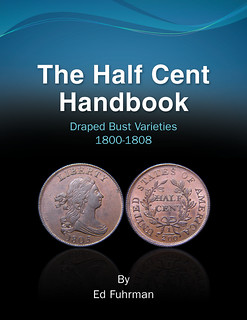 The Half Cent Handbook (Draped Busts Varieties 1800-1808) is the first in a series of four books I am writing on U.S. Half Cents.
The Half Cent Handbook (Draped Busts Varieties 1800-1808) is the first in a series of four books I am writing on U.S. Half Cents.
The second book is about Classic Head and Braided Hair Varieties and will be released later in 2021. Book three is on the Liberty Cap Varieties. And finally the fourth book will be about Half Cent Mint Errors.
I've been collecting coins for 47 years and have been specializing in Half Cents for the past 25 years. It's been well over 20 years since a book comparable to this has been released. Many new things have been discovered in the past couple of decades. New die states have been discovered. New finest known examples have come to light. The book contains updated information on die varieties, die states, & rarity ratings. It is designed to be the most user-friendly attribution, grading, and cherry picking guide ever produced for Draped Bust Half Cents.
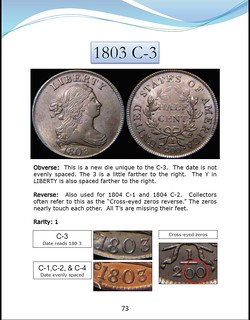 Beginners and advanced collectors alike will benefit from the information in this book. My goal with this series of books is to bring Half Cents into the mainstream. Early copper coins can be a challenge to learn. I find that collectors often feel intimidated by how complex these coins seem to be and tend to shy away from them. This book is designed to lift the veil of mystery that surrounds these coins and to make them fun and accessible to everyone. The book also contains stories about some of my better coin discoveries. The book is an easy and fun read even for the non-numismatist.
Beginners and advanced collectors alike will benefit from the information in this book. My goal with this series of books is to bring Half Cents into the mainstream. Early copper coins can be a challenge to learn. I find that collectors often feel intimidated by how complex these coins seem to be and tend to shy away from them. This book is designed to lift the veil of mystery that surrounds these coins and to make them fun and accessible to everyone. The book also contains stories about some of my better coin discoveries. The book is an easy and fun read even for the non-numismatist.
The book is 177 pages, hardcover, full color, smyth sewn binding, and top of the line in every way. I spared no expense in the production. They are available directly from me for $105 shipped. For ordering, I can be contacted at: Guitarman68@optonline.net .
Or I can be contacted via Facebook with a simple search of my name.

NEW BOOK: COINS FROM SWEDEN 995-2022
An article by Ursula Kampmann in CoinsWeekly February 18, 2021 alerted me to a new two-volume book on Swedish coinage self-published by the author Roberto Delzanno. Here's a Google-translated description from the author's website. Looks like a beautiful work, but be sure to read Ursula's review for background. There are many more sample pages available on the author's site. -Editor
SWEDEN COIN BOOK - Coins minted 995-2022
For the first time in numismatic history, the book is published over all Swedish silver and copper coins with valuation prices. The title is printed in color for a total of about 1400 pages (two volumes), invitations, A4 in color, 6 kg numismatic explosive. The books catalog all Swedish coins from the Viking Age, the Middle Ages and up to the present day, coins minted and issued in Sweden's possessions (Germany & Baltics) and Hessen-Kassel during Fredrik I's time (1730-1751), as well as a selection of royal as well as personal medals. By combining four collection areas in one and the same catalog, the picture of Swedish numismatics becomes clear.
SWEDEN'S COIN BOOK 995-2022 contains statistics on known specimens, ie rarity designations based on a review of several thousand auction catalogs over the past 50 years.
The valuation prices in the catalog are based on achieved sales prices from auctions in Sweden and the rest of the world.
SWEDEN COIN BOOK 995-2022 contains several in-depth articles written in three languages: Swedish, German and English. The book also contains plenty of enlargements and detailed pictures with explanatory texts.
SWEDEN COIN BOOK 995-2022 includes the following
- Sweden 995-2022
- Viking Age, Middle Ages, modern times
- Sweden's possession coins 1561-1878 - Fredrik I Hessen treasury 1730-1751
- A selection of royal medals 1512 - 2019
- A selection of personal medals 1512 - 2019
- Test Coins
- Felpräglingar
- Statistics on sales
- Auction Prices
- Rarity Inventory
- depth articles on selected coins on the Swedish, German and English
- Detailed Oversized explanatory text
- Coin Master, Myntgravörer, Coins Communities, Brief history
- Author Roberto Delzanno
- Publisher Roberto Delzanno
- Color, about 1400 pages
- ISBN 9789163994685
- In stock for immediate delivery
For more information, or to order, see:
SVERIGES MYNTBOK 995-2022 - I lager för omgående leverans!
(https://delzanno.se/litteratur/sveriges-myntbok-995-2022)
To read the CoinsWeekly article, see:
The Entire World of Swedish Coinage in Two Books
(https://coinsweekly.com/the-entire-world-of-swedish-coinage-in-two-books/)

NEW BOOK: MAKING CHANGE
Last week we discussed the fiftieth anniversary of decimalisation in Britain. There's a new book on the topic by Tom Hockenhull, Curator of Medals and Modern Money at the British Museum. Here's an excerpt from an All About Coins article. -Editor
 On a grey, drizzly Monday, 15 February 1971, Britain went decimal. Ten years in the planning, 'D-Day' upended a currency system that had been unchanged for more than a millennium.
On a grey, drizzly Monday, 15 February 1971, Britain went decimal. Ten years in the planning, 'D-Day' upended a currency system that had been unchanged for more than a millennium.
Celebrating the publication of a new book, Making Change: the decimalisation of Britain's currency, here are a selection of little-known facts about how it happened.
Early advocates of decimalisation included Sir Christopher Wren (1632–1723) and the influential economist Sir William Petty (1623–87) who, in 1682, proposed a system to ‘keep all Accompts in a way of Decimal Arithmetick'.
However, the opportunity was not taken and in 1704 Russia became the first country to decimalise under the reforms of Peter the Great (reigned 1682–1725). There were concerted efforts to implement UK decimalisation during the mid-19th century. At the International Monetary Conference convened in Paris in 1867, representatives from several nations were invited to discuss how they might introduce a decimalised international currency.
Rather out of politeness than genuine enthusiasm, the British Government dispatched a Treasury official and Thomas Graham (1805–69), Master of the Mint, with instructions merely to observe the proceedings. Unbeknown to the government, Graham in his enthusiasm for the project had prepared by having the Mint produce pattern decimal pence/franc pattern coins which he shared with the other delegates along with his proposal for a decimal system.
The Government reluctantly agreed to investigate and it duly convened a Royal Commission. This Commission, however, poured cold water on the proposal, as it would require the withdrawal of all the UK gold coinage.
To read the complete article, see:
Decimalisation facts: decimalisation had been discussed since the 17th century
(https://www.allaboutcoins.co.uk/coin-guides/decimalisation-guides/decimalisation-facts-discussions/)
Published by SPINK, the book is also available in the U.S. for $15 on Amazon. -Editor
On a grey, drizzly Monday, 15 February 1971, Britain went decimal. Ten years in the planning, ‘D-Day' upended a currency system that had been unchanged for more than a millennium.
A national effort requiring cooperation at every level of society, many expected decimalisation to be a disaster. This is the story of its planning and implementation, of the successes and setbacks. It reveals the social and political forces that steered the biggest reform to sterling in its history.
Featuring exclusive interviews and profiles of the people involved – from politicians to coin designers, from royalty to checkout staff in Woolworths – this entertaining book helps shed light on Britain's troublesome relationship with change.
Hardback
W135mm x L204mm
W 0.26kg
80 Pages
RRP: £15
ISBN: 9781912667574
For more information, or to order, see:
Making Change: The Decimalisation of Britain's Currency
(http://www.spinkbooks.com/index.php?route=product/product&path=59/&product_id=765)
Making Change: The Decimalization of Britain's Currency (English)
(https://www.amazon.com/Making-Change-Decimalisation-Britains-Currency/dp/1912667576)
To read the earlier E-Sylum article, see:
FIFTIETH ANNIVERSARY OF DECIMAL DAY IN BRITAIN
(https://www.coinbooks.org/v24/esylum_v24n07a27.html)
To read an article from The Guardian suggested by Howard Berlin, see:
‘D Day': UK marks 50 years since decimalisation
(https://www.theguardian.com/money/2021/feb/15/d-day-uk-marks-50-years-since-decimalisation)

PERIODICAL: THE CHOPMARK NEWS DECEMBER 2020
The Chopmark News is the newsletter of the Chopmark Collectors Club. The latest issue (December 2020) has arrived. Editor Colin Gullberg summarized the issue as follows. -Editor
 I hope everyone is
well and surviving
the pandemic. It's
hard to believe it
has been a year
already. Hopefully
this new edition of
The Chopmark
News will lift your
spirits.
I hope everyone is
well and surviving
the pandemic. It's
hard to believe it
has been a year
already. Hopefully
this new edition of
The Chopmark
News will lift your
spirits.
In this issue we meet member Norm Cochrane. Norm is member 116—one of the originals and the second oldest active member.
I have three interesting articles. First is You Collect What? by Howard Daniel III. Howard reminisces about his early collecting days in Vietnam.
New member Ben Dalgleish has submitted an article on the history of chopmarked coins in Hong Kong where he lives. Ben also works as a part-time dealer and knows many of the key people in Hong Kong, including Tony Lee who I interviewed in June 2018 (issue 22 vol. 1).
The third article is a reprint by Pat & Margaret O'Rouke titled The Magic of Chopmarked Coins. It first appeared in the Australasian Coin & Banknote Magazine Vol. 9 No. 7, August 2006. I would like to thank the Australasian Coin & Banknote Magazine and Mrs. Margaret O'Rouke and editor John Mulhall for allowing us to reprint it.
Finally, I interview Dr. Helen Wang of the British Museum. She is Curator of East Asian Money at the British Museum.
There are also lots of pictures from members and recent auctions at Teutoburger Münzauktion, Stephen Album and Aureo & Calicó auction houses.
Howard Daniel and Helen Wang are contributors to The E-Sylum as well, and in other articles we'll republish with permission excerpts from their profiles in The Chopmark News. Thanks.
To join the Chopmark Collectors Club, dues are $10/year for the e-edition and $25/year for print plus e. The easiest way to pay is PayPal [address: chopmarknews@gmail.com ] or if you're in the US by US check to:
Rich Licato
1905 N. Hancock St.
Arlington, VA 22201
Make the check out to 'Rich Licato'. -Editor
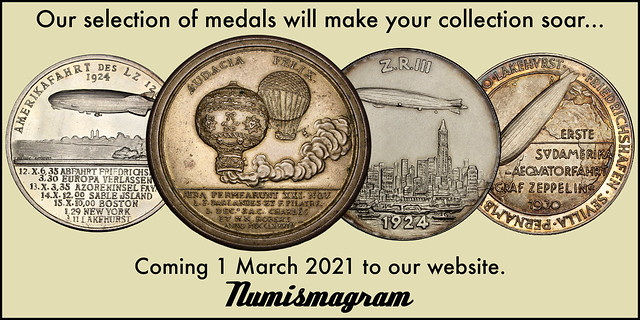
JAMES C. RUEHRMUND (1926-2021)
Tom Kays writes:
"James C. Ruehrmund, of Richmond, past president and Life Member of the Virginia Numismatic Association passed away February 18th, 2021 at the age of 94. Jim received an American Numismatic Association Presidential Award in 2020 and served as past editor of The Virginia Numismatist. The Richmond Times Dispatch ran a profile of James C. Ruehrmund written by Betsy Powell in 1987 that was reprinted in The Virginia Numismatist, Volume 23, Number 2, March 1987, now archived on the Newman Numismatic Portal, and adapted here."
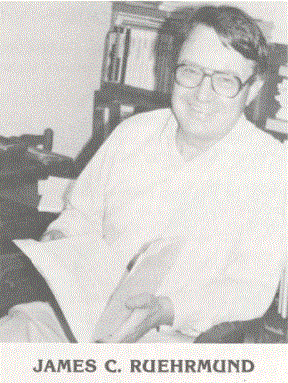 Jim Ruehrmund has a long history of fascination for the Civil War.
Jim Ruehrmund has a long history of fascination for the Civil War.
"When I was a little boy, I had a collection of coins and various kinds of paper currency, which had come down through the family," he said, pulling out an 1874 25-cent note that belonged to his grandfather, James R Sheppard.
"He walked to Richmond from Glen Allen. He came to Richmond to seek his fortune." Reuhrmund explained the origin of the note called a shin plaster.
Ever since this small piece of rag paper was passed on to him, he has been hooked on Virginia History and Confederate money.
A Richmond native, Reuhrmund's Virginia roots go back to the early 17th century on his mother's side and 1882 on his father's side, all having settled within 50 miles of Richmond.
Jim attended Virginia Polytechnic Institute and the Naval Academy, was commissioned an officer in 1947; he retired from the Navy in 1969. He served as a division director for the State Air Pollution Control Board taking early retirement in 1984.
"And I thought I was retired," Reuhrmund said, laughing as he listed his current involvements.
He has just started his second year [1987] as president of the Virginia Numismatic Association, a statewide coin collector's organization with approximately 400 members.
His office includes planning the annual state coin show, held the [last] weekend of September.
"Getting ready for these shows is a major operation," he remarked, beginning to settle down again after what he called a hectic, but successful weekend.
Since his retirement, he has also been working one day a week at the Museum of the Confederacy, trying to catalogue and inventory the Confederate currency in their collection. His wife Elsie is a trustee of the museum.
He also belongs to the Richmond Rotary Club, the Civil War Round Table and Sons of Confederate Veterans. He gave talks at the United Daughters of the Confederacy and various chapters of the state coin club. He helped start the Tidewater Chapter in 1956.
His interests ranged from ancient coins to paper money to Confederate Naval and military subjects.
"I was fascinated with the war even as a little boy," he said. "I'd get my mother to walk me down to where some of the old vets lived, the area where the Virginia Museum is now. They'd sit on benches on the central walkway and whittle sticks and chew tobacco. Occasionally, I'd have a chance to talk to them.
He started laughing. "My children act like I talked to Hector and Agamemnon, the heroes of the Trojan War. It's that remote to them."
"But it's something I treasure having done – a link with long ago."
Thank you - sorry to hear the news. -Editor
To read the original article on NNP, see:
https://nnp.wustl.edu/library/book/549381
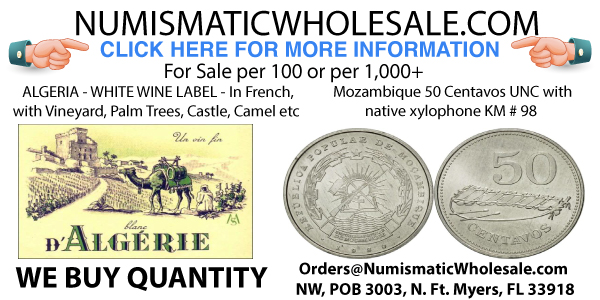
GENE HYNDS (1931-2021)
John and Nancy Wilson and Mark Lighterman submitted this remembrance of Gene Hynds. -Editor
12/25/31 - 02/16/21
We were informed recently that our good friend Gene Hynds had passed away. Though he has been in an assisted living place near Daytona Beach, FL for many months it was still a shock to all of us. All of us have known Gene for many decades going back to the Florida United Numismatist and American Numismatic Association Conventions along with a few others – like Georgia Numismatic Association and Blue Ridge Conventions that were held in Dalton, Georgia. It was always fun getting together with Gene, Pat and Bill at these events and we will always remember going out to dinner and doing other things with them. In our minds he is irreplaceable and will always have a place in our hearts for his love of family and friends, numismatics and his generosity of time and talents for many numismatic organizations. As another hobby he loved his 1965 Mustang convertible which he took care of with loving hands.
Gene had been involved in the numismatic hobby since he was 13 years old. At that time he started a set of Indian Head Cents and joined a coin club. After a stint in the Navy as a Seabee he began his journey full time in numismatics attending his first ANA convention in Buffalo, NY in 1947. Gene wore many hats in the numismatic hobby which we will get into later. He had a great passion for collecting, especially Schwab Stamp & Seal Heart Badges a company which was located in Milwaukee, Wisconsin. Besides the heart shaped badges his other major love was for Tiffany Scrip Notes. Some of his notes live on in obsolete paper money references where his name is mentioned. Though these were his major undertakings he also collected coin glass and had a type note collection along with some Pan American Expo items.
Another pursuit of his was obtaining all the Krause Publication tokens and medals that they produced for coin shows and other events. Besides these he collected those of Coin World and FUN. He also utilized his large library of numismatic books and loved the overprinted Red Books. At local and national coin shows he attended (and wasn't working as a volunteer) he loved to look at tokens and medals around the bourse floor. Several times he came up to us or other friends and handed them a coin, token or note and said he hoped you didn't have it. His generosity for doing this is well known with several collectors and friends. His exhibits were always well done and researched and was the recipient of awards at all levels of the hobby. He loved taking interested collectors and even strangers up to his exhibit(s) and telling them about the items on exhibit. As an author he wrote many articles about various numismatic subjects both in local club publications as well as national clubs.
Gene also gave numismatic talks at all levels of the hobby including the ANA along with FUN. He was also an ANA Certified Exhibit Judge (qualified in at least 10 categories). At the ANA WFOM in 2014 Gene received the Joseph E. Boling Award for Judging Excellence. This award is only given out to very dedicated judges who spend "lot of time," judging the exhibits. He has also served as a coin club officer (or worker) for local, regional and national organizations. He was President of FUN (1981-82) and served many years on the Board of Governors and was at one time their Historian. He also served as the Exhibit Chair for FUN for several years. as well as acting Chief Judge during different times. A full-page article in the 12/01/98 edition of Numismatic News, by Scott S. Rabehl featured Gene Hynds, "Hynds clearly ‘exhibits' his love of numismatics." A well-done story on this icon of a collector and dedicated worker. We loved his comment regarding the hobby, "It has given me the opportunity to travel and visit friends all across the country. I haven't missed an ANA convention in over 25 years." Gene's legacy and contributions live on in the Newman Numismatic Portal, which has dozens of pages that mention him.
The honors and awards that he has received over the years are many. First and foremost was Gene and his wife Pat received the American Numismatic Associations highest award, The Farran Zerbe Memorial Award, in 2004. Up until that time they had attended ANA conventions for 32 years. A nominating submission for them reads, "Both Gene and Pat Hynds have contributed greatly to the advancement of the ANA and our Numismatic Hobby for many, many years. This dedicated numismatic couple have lived and breathed numismatics for an entire lifetime." The standing ovation they received from the attendees at the ANA Awards banquet spoke volumes of how loved they both were by their friends who were in attendance. In 1983 Gene received the ANA Medal of Merit and in 1997 the Glenn Smedley Award. Both received the ANA President's Award in 1997. In 1984 Gene received the ANA Wismer Memorial Exhibit Award in 1984. He also served on various club Rep programs for the ANA. A longtime ANA National Volunteer Gene spent countless hours helping ANA in many capacities, especially in the exhibit area along with helping the ANA to set-up and breakdown the conventions (many times with Pat at his side).
At the ANA Convention in Miami, FL in 1967 he was placed on the Exhibit Committee. That was the year he met the ANA Sergeant at Arms John Gabarron. It was at this convention that he helped John with the "tough job of handling and stacking the wooden shippers and repairing broken glass cases during the show." At all the following shows before both retired Gene was at his side helping at the shows in any capacity to keep it running smoothly. In the year 1969 Gene became very involved with ANA judging which continued at every show he attended. For all the conventions we attended if you wanted to talk to Gene you headed down to the exhibit area where he camped out from the time the show opened until it closed. The 1974 ANA in Miami Gene was appointed the Exhibit Chairmanship. That was the year Grover Criswell came in and informed the committee that he had an exhibit for the show and needed help bringing it in. It was a chore bringing in a ten-foot-high Yap Stone (now on display at a bank in Canada).
The 1976 Convention in New York John Gabarron (1918-2001) approached Gene and asked him to be his Assistant Sergeant at Arms. He accepted and in a few years the Board approved his position. He served in that capacity until the retirement of John and President Anthony Swiatek in 1997 wanting to appoint him to the position. Gene wanted the position completely eliminated because all the duties of the Sergeant at Arms were taking over by other staff and appointed positions at the ANA Conventions. The position of Sergeant at Arms was removed at Gene's request and a motion was presented to the Board which they approved and passed. Besides John being made an Emeritus Sergeant at Arms Gene also received this high honor.
As for his other commitment it was to the Florida United Numismatists. He served on the Board and was President from 1981 to 1982 and served for two decades. Gene wore his orange coat proudly for many years. He was Exhibit Chair for many years. He received many awards from FUN for his service. Gene also was a long-time TAMS board member and served as their Second and First Vice President, for his long-time service TAMS awarded him their highest honor the TAMS Medal of Merit. He received the coveted Krause Publications – Numismatic News Ambassador Award in 1985 for his decades of service to the numismatic hobby. In another area Gene was a very longtime member of the Florida Token Society. He served as their President and on their Board for many years and contributed many articles.
His life was filled mostly with numismatic pursuits, but he was also a family man supreme. He loved his wife Pat (married 65 years) and his other children, Bill, Terry and Jim. In closing this In Memoriam tribute to Gene Hynds we can recall when we visited Graceland (John and Nancy) the words on the tomb of Vernon Elvis Presley, "For when that one great scorer comes to write against your name; He writes not that you won or lost, but how you played the game." Gene payed the game of life in a loving, caring and in coin word terms MS-70 with not only his family but everyone who crossed his path.
With sincere sympathies to Pat and their family. Your loving friends, John and Nancy Wilson and Mark Lighterman

THOMAS JEFFERSON'S COIN COLLECTION
The latest addition to the Newman Numismatic Portal is a collection of research material related to Thomas Jefferson's coin collection. Project Coordinator Len Augsburger provided the following report. -Editor
Thomas Jefferson Coin Collection
E-Sylum readers are likely familiar with the George Washington numismatic collection, which notably contained an 11-piece silver Comitia America medal set (now at the Massachusetts Historical Society), in addition to the massive gold example of the Washington Before Boston medal, today at the Boston Public Library. Thomas Jefferson also collected coins, and in 1994 Beth Deisher of Coin World investigated the situation.
Later, she shared the material with Eric P. Newman, and today this is digitized on Newman Portal. Jefferson made a donation to the American Philosophical Society (APS) of "coins and medals," c. 1806, apparently gathered from travels in Europe. The APS collection was loaned in the 19th century to the Philadelphia Museum of Art, and returned much later, with pieces missing. APS ultimately sold its numismatic holdings in 1967. The historic record keeping and museum cataloging was not sufficient to specifically identify the Jefferson pieces, and today these are lost to the winds.
While coin collectors would like to think that the Founding Fathers were dedicated numismatists who were intimately involved with the early U.S. Mint, Jefferson, who oversaw the formation of the Mint as the Secretary of State, summed up the situation in an 1825 letter to Mint Director Samuel Moore: "I do not remember a single circumstance respecting the devices on our coins except that someone having proposed to put Genl. Washington's head on them it was entirely objected to." In reality, the decisive vote in the House on this question was passed by a narrow margin, 26-22, in favor of a depiction of Liberty on the coinage. Even Jefferson's single recollection was not quite right.
Image: Extract from American Philosophical Society correspondence, 2/14/1994, related to Jefferson coin collection research
Link to Beth Deisher research on Jefferson coin collection on Newman Portal:
https://nnp.wustl.edu/library/archivedetail/540804
Beth adds:
"I was invited to testify during the Nov. 22, 1991, Senate Banking Committee's hearing regarding David J. Ryder's confirmation hearing for Director of the U.S. Mint. (He had been nominated for the post in July 1991 by President George H. W. Bush.) Among the issues I identified that the new director should be aware of was the need to redesign the nation's circulating coins, citing the the law dating from the 1890s that authorizes the Secretary of the Treasury to change designs after they have been in circulation for a minimum of 25 years. I noted that all of our then circulating coins were long past due for new designs. During the questioning phase of the hearing, Sen. Alan Cranston, D-Calif., asked if the Founding Father's had expressed their opinions about coin designs. I responded, citing George Washington's famous comments about not wanting his portrait to be used on coins for fear of being perceived as a king. Also I noted that early legislation had expressly required the word Liberty and the portrayal of an eagle as devices to be used on our coins.
"After the hearing concluded, Sen. Cranston came over to me to thank me for traveling to Washington, D.C., to testify. He related that he started his career as a journalist and that one of his historical heroes was Thomas Jefferson. He asked whether I was aware if Jefferson collected coins. I told him I did not recall ever having read about Jefferson being a coin collector, but upon returning to my office I would research the subject and get back to him.
"My first call was to Eric P. Newman. He said he did not have anything in his files regarding Jefferson being a coin collector, but if I found anything, he would be interested in any documentation. The second person I contacted was Park S. Rouse Jr., a journalist, historian, and author of 22 books on Virginia history (whom I met in 1975 and worked with on a year-long Bicentennial project when I was living and working in Virginia). Mr. Rouse immediately put me in contact with curators at Monticello, who assisted in obtaining the documents now digitized in the Newman Portal.
"I shared the documents with Mr. Newman, who said they may prove useful for a project he had in mind. Also, I wrote to Sen. Cranston and apprised him of what I had found."
VIDEO: ELLSWORTH AT 2021 HOUSTON MONEY SHOW
These are selections from the David Lisot Video Library that feature news and personalities from the world of coin collecting. David has been attending coin conventions since 1972 and began videotaping in 1985. The Newman Numismatic Portal now lists all David's videos on their website at:
https://nnp.wustl.edu/library/multimediadetail/522852
Here's one with ANA President Steve Ellsworth.
-Editor
American Numismatic Association President Ellsworth Confronts COVID Pandemic for Business & Coin Hobby at Houston Money Show 2021.
VIDEO: 5:27.
Col.Steven Ellsworth, Ret., President, American Numismatic Association,
David Lisot, Interviewer, CoinTelevision.com. January 23, 2021.
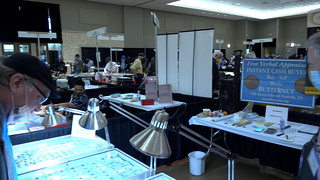 Steven Ellsworth is committed to numismatics both as a business and a hobby. He supports coin clubs by his membership and setting up at the conventions. He talks about dealing with the COVID Pandemic and the reaction of the collecting public. He shares the latest news about the American Numismatic Association.
Steven Ellsworth is committed to numismatics both as a business and a hobby. He supports coin clubs by his membership and setting up at the conventions. He talks about dealing with the COVID Pandemic and the reaction of the collecting public. He shares the latest news about the American Numismatic Association.
An excerpt of the video is available for viewing on the Coin Television YouTube Channel at:
https://youtu.be/dRUbakysvsE
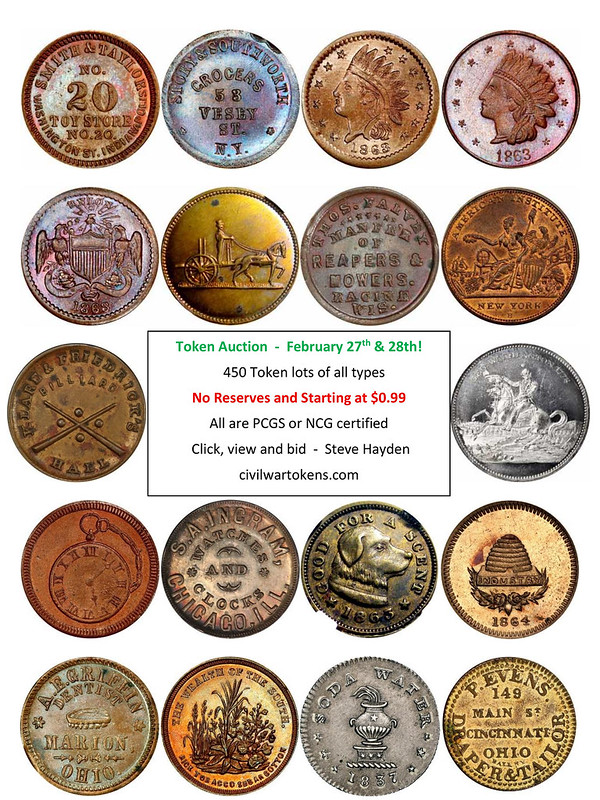
RED BOOK MODERN COMMEMORATIVE COVERAGE
Gary Dunaier writes:
"Regarding the 2022 Red Book, specifically the publishers' statement that the section on commemorative coins has been "extensively revised", the commemorative section has had an inconsistency that has always bothered me. Background information is only provided up to the 1994 World Cup issue; everything after that just has a photo and the value. Has that been fixed as part of the extensive revision?
"(Here's a photo of the 2017 edition to demonstrate what I'm talking about.)"
Here's a response from Whitman's Dennis Tucker. Thanks! -Editor
Believe me, I feel Mr. Dunaier's pain. I wish we had enough pages and space to include historical narrative for every modern commemorative coin—the way we do in Mega Red, for example. In Mega Red we devote more than 100 pages just to modern (1982 to date) commemoratives, and more than 50 pages to classic commems. And they're bigger pages, to boot!
In the regular-edition Red Book we sometimes have to make editorial decisions like cutting out the historical narratives for the more recent years of modern commemoratives. I understand those decisions can seem arbitrary, inconsistent, or like we're not going in-depth enough. I'm grateful that Mr. Dunaier reached out and expressed his enthusiasm for modern commemoratives. The Mint continues to produce compelling and historically important new coins, fulfilling its congressional mandate, and the Red Book will continue to document them in as much detail as we can.
Here's a sample page from the revised commemoratives section. This shows how we've combined our cataloging of individual commemorative coins with their related government-issued sets. These two groups of "Mint products" used to be in separate sections of the book.
To read the earlier E-Sylum article, see:
NEW BOOK: GUIDE BOOK OF U.S. COINS, 75TH EDITION
(https://www.coinbooks.org/v24/esylum_v24n07a04.html)

GREAT NUMISMATIC THEFTS
Pete Smith writes:
"In response to your question last week, I put together a list of coin thefts. It is hard to compare values adjusted for inflation along with reports that don't mention a value. I don't claim that this is a "top 25" list. I only claim that the list is interesting."
Pete's list is below, and it's certainly interesting. Agreed, it's hard to rank these by any objective measure. The complete inventories are rarely published, and valuation is difficult. Thanks for compiling this! -Editor
This report does not include the theft of current coins, currency or bullion and does not include looting during time of war. It also does not include robberies where the owner was murdered.
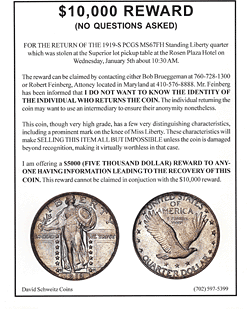 1. In 2019, three coins were stolen from a collection in Durango, Colorado. They included
an 1894-S barber dime, one of nine known, a 1652 Willow tree silver sixpence and a
1794 flowing hair dollar. Value of the three coins was estimated at $2.1 million.
1. In 2019, three coins were stolen from a collection in Durango, Colorado. They included
an 1894-S barber dime, one of nine known, a 1652 Willow tree silver sixpence and a
1794 flowing hair dollar. Value of the three coins was estimated at $2.1 million.
2. March 27, 2017, three thieves stole a single gold coin from the Bode Museum in Berlin. It was a one million dollar gold Canadian Maple Leaf weighing 221 pounds and valued at $4.3 million. Suspects were apprehended and three received prison sentences.
3. In 2012 thieves took five coin cases out of Julian Leidman's minivan when he stopped for dinner in Pine Brook, New Jersey. The loss was around $4 million in value.
4. In 2011, William Gray admitted stealing presidential coins that were missing edge lettering from the Philadelphia Mint. Estimated value was $2.4 million.
5. In 2007 an employee at the ANA Museum admitted stealing a million dollars worth of coins. Collections manager Wyatt Yeager was convicted and received a sentence of 27 months in prison. Investigation of this theft revealed that other coins were also missing but were not taken by Yeager.
6. In 2007 thieves took a bag of coins from a car at the valet stand of the Peabody Hotel during the FUN show. Three thieves with knives were captured on surveillance camera but were not caught. At last report the car they were driving has also not been found.
7. Also in 2007, a thousand coin collection was stolen from the home of Lord and Lady Stewartby in Broughton, Scotland. Value was estimated at a half million pounds. The remaining collection was donated to a museum.
8. In 1999 thieves followed Tom Reynolds home to Omaha after the Central States show and took coins out of his unlocked car. Loss was estimated at a million dollars. An arrest was made in July. Some coins later showed up that had been consigned to an auction by Stack's Bowers.
9. In December 1976, the reference collection for The Organization of International Numismatists was stolen from a The Americana Hotel in New York City.
10. On December 1, 1973, a visitor used a ruse to gain entrance to the Harvard's Fogg Art Museum after hours. He produced a gun and restrained the guard while four men ransacked the coin collection. Perhaps 5000 coins valued at $5 million were taken. At the time this was described as the largest coin theft in history.
11. In 1967 thieves broke into the home of Willis Dupont in Coconut Grove, Florida and stole a collection of 7000 coins. Some have been recovered over a period of time.
12. Coins were stolen from Yale University on May 29, 1965. A Brasher Doubloon recovered after the theft was later sold to raise funds for a new library.
13. In November 1962, the coin collection was stolen from the Harry S. Truman Library in Independence, Missouri. It had been donated by John W. Snyder, Secretary of the Treasury under Truman.
14. The Nevada State Museum was robbed on August 2, 1952. Two thieves snuck in during the night and smashed a glass display case and stole rare coins struck at the Carson City Mint.
15. In 1930 a collection of ancient silver and gold coins was stolen from the Russian Museum in Leningrad.
16. On January 2, 1930, an attempt was made to break into the Omaha Public Library to steal from the Byron Reed collection. A suspect was apprehended before the theft could be completed.
17. In 1929 a collection was stolen in France that belonged to Ernest Gregoire. It was stolen from the home of his cousin after his death.
18. The Victoria and Albert Museum in South Kensington was robbed of a priceless collection of gold coins on July 29, 1926. Some of these were returned after being sold to a faultless buyer.
19. In 1920 a group of more than a hundred gold coins was stolen from the Lisbon National Library.
20. The Etruscan Museum of Corneto, Italy, lost its collection of Ancient coins, cameos and jewels to thieves in 1916.
21. In 1914, The Numismatist reported that the entire numismatic collection of the Museum of Lubeck had been stolen in Berlin.
22. Coins were stolen from the collection of Waldo Newcomer in 1913. Value of the loss was $30,000. An electrician who had recently installed a burglar alarm was charged with the theft. When he was unable to sell all of the stolen coins, he dumped some in the Hudson river.
23. In 1913, The Numismatist reported on the theft of 5000 coins worth $250,000 from the Glen Island Realty and Development Company in New York.
24. In the 1880's a thief stole a collection of Greek coins from the local museum. He sold them to Dealers Rollin & Fenardent of Paris. Having gotten a good look at the establishment, he returned later and stole the collection again from the dealers.
25. On September 18, 1858. two visitors used a fake key to open a cabinet at the Philadelphia Mint. About $200 in gold coins were taken that would have a high collector value today. The thieves tried to sell them to Philadelphia dealers S. H. & H. Chapman but they recognized that these were unusual coins and the thieves were apprehended. A unique 1849 Templeton Reid $25 gold coin was never recovered.
26. On April 10, 1796, coins were stolen from the Gardner Baker collection at the Tammany Museum. Someone wrote an article about this for The Numismatist.
Yes, that adds up to 26. But Pete notes that #16 was not a theft because it was thwarted. What notable thefts are missing? What stories can be shared?
One I can think of (but don't have any documentation for) was mentioned by John J. Ford - a brazen broad-daylight theft of rare early American medals from the New-York Historical Society. If I recall the story correctly, the thieves posed as workmen and carried the entire exhibit case out the front door while someone held it open for them. It probably doesn't qualify as "large", but it's certainly notable. -Editor
To read earlier E-Sylum articles, see:
LOOSE CHANGE: FEBRUARY 14, 2021 : The 25 Greatest Art Heists of All Time
(https://www.coinbooks.org/v24/esylum_v24n07a31.html)
JOHN FORD TAPE AND CHARLESTON SLAVE TAGS
(https://www.coinbooks.org/esylum_v06n50a09.html)
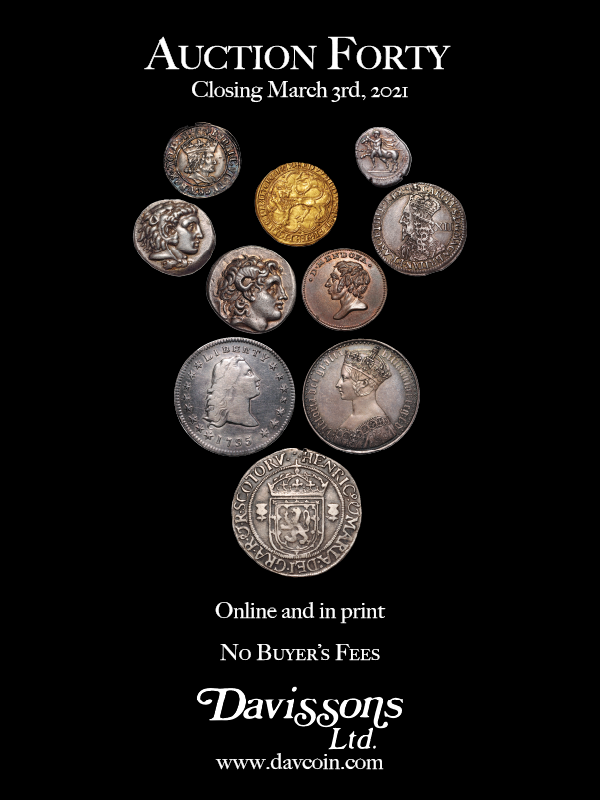
TREASURY OFFICIAL COURTESY AUTOGRAPH NOTES
Jeff Kelley writes:
"You recently posted an item about a one dollar bill with an authentic Joseph W. Barr signature above the one printed on the banknote, and you asked if any readers collected these. I have been building a small collection of these "courtesy autographs" for several years.
"Aside from a run of five consecutive dollar bills autographed by Barr that I purchased last year, my collection has been built exclusively by sending banknotes directly to the appropriate former Treasurers and Secretaries of the Treasury.
"As you might expect, collectors of these signed banknotes strongly prefer crisp uncirculated currency, so I use new notes that I get at the bank or purchase from banknote dealers.
"If I happen to receive any dollar bills in circulation that date from the Carter or Reagan administrations, I have on occasion supplemented my collection by getting those signed as well since they are the oldest issues with living signatories.
"It is an inexpensive collection that is fun to build."
Cool! As far as I can recall, I believe Mary Ellen Withrow was the only money signer I've met in person. I've also been fortunate to meet some artists from the Bureau of Engraving and Printing who have signed some notes for me. -Editor
Jeff adds:
"Here is a note signed by Treasurer Mary Ellen Withrow last year. This was actually the second time she signed some dollar bills for me. The first ones I got some years ago I subsequently sent to Secretary of the Treasury Robert Rubin but I never got those back, one of the potential pitfalls of mailing money back and forth."
To read the earlier E-Sylum article, see:
NUMISMATIC NUGGETS: FEBRUARY 7, 2021 : Signed Joseph W Barr Note
(https://www.coinbooks.org/v24/esylum_v24n06a25.html)
THE BOOK BAZARRE
A Guide Book of Gold Eagle Coins, 2nd edition: The newly revised and updated 2nd edition of Q. David Bowers's popular reference debuts March 2, 2021. Preorder your copy—the complete source for history, grading, and values for America's $10 gold pieces—for $29.95. Online at Whitman.com , or call 1-800-546-2995.NOTES FROM E-SYLUM READERS: FEBRUARY 21, 2021
Conder Token Collector's Club Website Updated
Eric Holcomb writes:
"Thank you for featuring the Conder Token Collector's Club and its journals (on the NNP) in last week's edition of The E-Sylum. Unfortunately the club's own website, https://ctcc.info/, was in transition to a new WordPress format last Sunday, and most content was temporarily unavailable. Readers are invited to try again to view the new website, send me any comments, and submit material for possible use in the journal or on the website."
The new site looks great - check it out. -Editor
To read the earlier E-Sylum article, see:
NEWMAN PORTAL ADDS CONDER TOKEN JOURNALS
(https://www.coinbooks.org/v24/esylum_v24n07a10.html)
No Tip Coin Wooden Nickel
Jeff Kelley of
Massachusetts writes:
"Further to the stories about the "Give Nothing / Get Nothing" tokens, I have seen a few different vintage wooden nickels with a similar illustration and text. Here is one design I recently acquired."
Thanks - always something new to discover in numismatics. I'm still curious to learn more about Roy Morser, who produced the Zero Cents tokens in the 1960s. -Editor
To read the earlier E-Sylum articles, see:
ZERO CENTS NO-TIP KOOKIE KOIN
(https://www.coinbooks.org/v24/esylum_v24n02a28.html)
NOTES FROM E-SYLUM READERS: FEBRUARY 14, 2021 : Give Nothing, Get Nothing Token Die
(https://www.coinbooks.org/v24/esylum_v24n07a15.html)
Books on the U.S. Branch Mint in Manila, Philippines
Scott Barman writes:
"Are there any books, documents, or any other written record about the U.S. Branch Mint in Manila, Philippines? A lot of the documentation I found is about the coins they struck but not the back story or other details."
Well, there are the Philippine Numismatic Monographs published by the Philippine Numismatic and Antiquarian Society, and the journal Barilla from the Central Bank of the Philippines Money Museum. We've been unsuccessful so far in adding these to the Newman Numismatic Portal. Does anyone have access to these, or a contact in the Philippines we can reach out to for permission?
I'm having trouble locating it in the E-Sylum archives, but I remember mentioning a great exhibit someone put together on the Manilla Mint. There is also the 2021 (74th ed.) Philippine Collectors Forum / 100th Anniversary Manila Mint edition of the Red Book which has a couple pages of information. Below are a couple editions of Lyman Allen's book mentioned in earlier issues. I would also reach out to the Philippine Collectors Forum itself. -Editor
To read the earlier E-Sylum articles, see:
NEW BOOK: U.S./PHILIPPINE COINS BY LYMAN L. ALLEN
(https://www.coinbooks.org/esylum_v12n06a08.html)
NEW BOOK: U.S. / PHILIPPINE COINS 2012 7TH EDITION
(https://www.coinbooks.org/esylum_v16n49a04.html)
JANUARY 2021 PHILIPPINE COLLECTORS FORUM
(https://www.coinbooks.org/v24/esylum_v24n04a27.html)
Philippine Numismatic Forum
(https://www.facebook.com/groups/145255732204985/)
More on Joe Levine
Sam Deep writes:
"Over the years, purchases from Joe Levine contributed mightily to my collections and exhibits. Back in the day, spending time with him at his table was the highlight of an ANA convention for me. His expertise in the area of medals put him at the top. His ready willingness to share that expertise put him over the top."
Regarding Joe's sense of humor, Dave Schenkman writes:
"The mention of Joe's inscription in a book sent to Ford, reminded me that when his book on inaugural medals was published he gave me a hardback copy inscribed "For Dave Schenkman whose previous literary efforts did not inspire this one."
To read the earlier E-Sylum articles, see:
HENRY JOSEPH LEVINE (1940-2021)
(https://www.coinbooks.org/v24/esylum_v24n06a09.html)
NOTES FROM E-SYLUM READERS: FEBRUARY 14, 2021 :
More on Joe Levine
(https://www.coinbooks.org/v24/esylum_v24n07a15.html)
Book: Pietro Giampaoli Coins and Medals
Scott Miller writes:
"Regarding the mention of Pietro Giampaoli last week, you might be interested in knowing there is a catalogue of coins and medals by Giampaoli, published in 1986. "
Thanks! -Editor
To read the earlier E-Sylum article, see:
PIETRO GIAMPAOLI'S ITALY 500 LIRA COIN DESIGN
(https://www.coinbooks.org/v24/esylum_v24n07a26.html)
F.C.C. Boyd Photo
Len Augsburger of the Newman Numismatic Portal passed along this image of F.C.C. Boyd from the Eric P. Newman papers. Thanks! -Editor
To read the earlier E-Sylum article, see:
F.C.C. BOYD BIOGRAPHICAL DETAILS
(https://www.coinbooks.org/v24/esylum_v24n07a13.html)
Query: Mystery Token
Jonas Denenberg writes:
"One of my friends is trying to figure out what this is and where it's from. He, I, and ten other people tried and nobody knows (Google doesn't seem to know either). Would any E-Sylum reader know what it is?"
Interesting. It has the look of a token. A marriage piece, perhaps? Can anyone help? -Editor
FDR March of Dimes Facts
Harry Waterson writes:
"BTW, The March of Dimes was an Eddie Cantor word play. There was a well-known newsreel series that played in movie houses in the 1930s called The March of Time.
"History Hustle has done a nice job packaging the facts attractively. It bothers me that maybe it is just too homogenized. Am I being too picky?
"One does wonder what coin will be struck to commemorate the Covid-19 vaccine."
Query: 2021 Mardi Gras Doubloons and Throws?
Ralf Böpple of
Stuttgart / Germany writes:
 "Carnival Tuesday reminded me of a book that somehow found its way into my library a while ago: Jay Guren and Richard Uran: Carnival Panorama - New Orleans Mardi Gras Medals and Krewes, 1884 - 1965. New Orleans, 1966, 201 pp., index, estimated values.
"Carnival Tuesday reminded me of a book that somehow found its way into my library a while ago: Jay Guren and Richard Uran: Carnival Panorama - New Orleans Mardi Gras Medals and Krewes, 1884 - 1965. New Orleans, 1966, 201 pp., index, estimated values.
"I have never been to a Mardi Gras parade (or even to New Orleans), nor am I a collector of these medals, but the book is now 55 years old, and I understand that the custom of producing Carnival medals has evolved into a tradition of throwing so-called doubloons into the crowd during the parades. I guess this means a lot more designs have been made in the meantime.
"Just out of curiosity: might there be somebody out there who could tell us a little bit about these "doubloons"? Are they still popular? How many are made? What are the designs?"
Can any of our readers help? I haven't been there for years either. With the pandemic the parades have disappeared and many people are decorating their houses as stationary parade floats, inviting people to safely drive by to see them. I doubt there's any doubloon-tossing happening, but I wouldn't be surprised if some of the Krewes made and distributed 2021 doubloons anyway, either as a fundraiser or just to commemorate the historic non-event.
Here's a little friendly advice for when the event resumes. -Editor
Be warned! If you're at your first parade and reach down to pick up a doubloon with your hand, your fingers may never be the same! Many stomp on doubloons in their rush to claim them.
Hint: If you're standing next to a bunch of old grandmothers dressed in high heels and playboy bunny outfits, don't think your chances are any better. They may be old, but they have fast feet and the spikes on those heels - ouch!
For more information, see:
Mardi Gras Beads and Throws
(https://www.mardigrasneworleans.com/history/traditions/beads-and-throws)
To read earlier E-Sylum articles, see:
MORE ON MARDI GRAS DOUBLOON LITERATURE
(https://www.coinbooks.org/esylum_v12n37a10.html)
JOSHUA MCMORROW-HERNANDEZ EXPLORES EXONUMIA
(https://www.coinbooks.org/v21/esylum_v21n04a18.html)
Lecture: Viṣṇuvarman in the Golden Peninsula
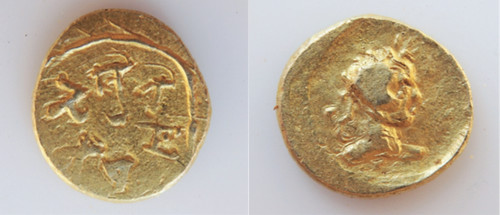
Viṣṇuvarman in the Golden Peninsula
A Talk by Nicolas Revire
 This lecture develops from recent numismatic studies and discoveries made at the site of Khuan Luk Pat, in Khlong Thom district, Krabi province of Peninsular Thailand. Some of the gold coins found there are inscribed on the reverse with the name Vi?uvama in Prakrit, possibly equivalent to Viṣṇuvarman in Sanskrit, and may refer to a local Indianized ruler of the first centuries CE. This would be the earliest royal title suffixed by °varman that we know of for a king in Thailand. This Vai??ava name, moreover, has, to date, not been found in the rest of Mainland Southeast Asia, although there are a few epigraphic occurrences ascribed to Viṣṇuvarman known in South Asia from the late 1st century BCE to the 6th century CE. In addition, and most remarkably, an inscribed seal from the 5th–6th centuries discovered long ago in Peninsular Malaysia contains the same name in Sanskrit, thus giving rise to speculations regarding the identity and relationships between these two Viṣṇuvarmans uncovered in the Golden Peninsula.
This lecture develops from recent numismatic studies and discoveries made at the site of Khuan Luk Pat, in Khlong Thom district, Krabi province of Peninsular Thailand. Some of the gold coins found there are inscribed on the reverse with the name Vi?uvama in Prakrit, possibly equivalent to Viṣṇuvarman in Sanskrit, and may refer to a local Indianized ruler of the first centuries CE. This would be the earliest royal title suffixed by °varman that we know of for a king in Thailand. This Vai??ava name, moreover, has, to date, not been found in the rest of Mainland Southeast Asia, although there are a few epigraphic occurrences ascribed to Viṣṇuvarman known in South Asia from the late 1st century BCE to the 6th century CE. In addition, and most remarkably, an inscribed seal from the 5th–6th centuries discovered long ago in Peninsular Malaysia contains the same name in Sanskrit, thus giving rise to speculations regarding the identity and relationships between these two Viṣṇuvarmans uncovered in the Golden Peninsula.
For more information, see:
Viṣṇuvarman in the Golden Peninsula | A Talk by Nicolas Revire
(https://thesiamsociety.org/activity/visnuvarman-in-the-golden-peninsula/)
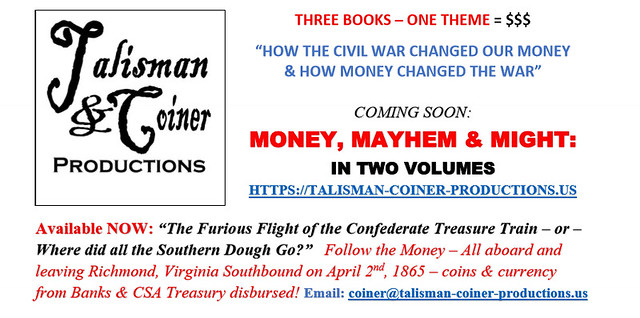
QUERY: DEALER PAUL S. SZEGO
Dave Hirt submitted these notes on dealer Paul S. Szego. -Editor
In a recent Kolbe & Fanning sale I purchased an auction catalog of NYC dealer Paul S. Szego's sale of 06/19/1937. This was his only auction sale, so I was trying to find some information on him, but, with little luck. Szego's address was 812 Broadway. I checked both The Numismatist and The Numismatic Scrapbook magazines of that year for his ads, but nothing. He may have some connection with Stack's, as the catalog cover looks much like the Stack sale catalogs of that period.
I seem to remember reading that Stack's sold his coins at a later date. However, looking at the Gengerke list of sale consignors, I came up empty again. So perhaps our readers may have some information on this dealer.
I found his name on an ANA membership list in the 1950's. He seems to have left the coin business, and was living in Virginia. His obituary was in the Feb. 1961 Numismatist. He died Dec 24, 1960. It does not state his age. It states that he was an authority on Greek and Roman coins, having written articles and pamphlets on them, and had won prizes with his exhibits.
I did find reference in P. O. Sigler's Numismatic Bibliography to a book Szego wrote in 1937, Collecting Greek Coins.
The 1937 work was a 15-page monograph published by Wayte Raymond. Can anyone provide more information on Szego? Thanks. -Editor
To read the complete item description, see:
Collecting Greek Coins by Paul S. Szego, PH.D. 1937
(https://www.vcoins.com/en/stores/ancient_numismatic_enterprise/9/
product/collecting_greek_coins_by_paul_s_szego_phd_1937/39452/Default.aspx)

COLLECTING CENTS AND HALF CENTS IN 1874
Gerry Tebben writes:
"While researching Wiatt Bros., a Columbus, Ohio, issuer of Civil War tokens, I stumbled across this article in the March 10, 1874, issue of The Daily Dispatch about collecting U.S. cents and half cents that might interest readers. It's signed by Frank N. Bebee. I don't know anything about him (at the moment) but did notice a notice in the January 1880 issue of Numisma in which the Columbus collector is selling his complete sets of cents and half cents by the piece.
"The Wiatts were an interesting family. In 1874 they and just about every other business in the city ran afoul of a temperance group. A few years later they were busted for running a crooked faro game. "
Thanks! I've been helping the Newman Numismatic Portal compile a database of numismatic articles in contemporary newspapers, and we added this one. -Editor
SMALL COINAGE OF THE UNITED STATES.
To the Editors of The Dispatch:
Thinking a short item would be of interest to many of your readers, I have undertaken to give a description of the cents and half cents of our American coinage to a limited extent. Although the tables are not exactly perfect, they are as correct as I have been able to obtain from any of the late works on numismatics. I obtain my authority for saying not correct from the works themselves. Although not perfect, they are in all probability so near it that but very few numismaticians will be able to find mistakes that will amount in the aggregate to a very great number.
The remarks in regard to some of the varieties of the cents, I think, will be of interest to any person who may read this article, and am positive it will be to any one who take an interest in coins. The descriptions of the manner in which the dies are produced will, in all probability, be instructive to the majority of readers.
The table of "Comparative rarity" will give a general understanding in regard to the rarity of issues, of the cents and half cents, which will answer the purpose of a collector until able to get a more perfect one. The annexed table is a compilation from Prime's Work on Coins and Dickenson's Numismatical Manual. The table of "types and varieties" will show many varieties of the cents each year. Among the most important I will mention a few: (For 1793, see table.) In 1795, there were two distinct types, one the thick planchet, (like 1794) with "one hundred for a dollar" on the edge, and a thin planchet without this inscription. In 1796, the liberty cap and fillet head. In 1800, there was one variety, in the 1800 being struck over 1799, caused by an alteration of the die in the mint from 1799 to 1800; the same of 1807 over 1806; the same of 1810 over 1809; the same of 1811 over 1810; the same of 1823 over 1822; in each the under figure (in good specimens) being very plain; in 1808, the cued hair and turbaned hair; in 1814, a crossed four and plain four; in 1817, one of the types had thirteen stars and the other fifteen; in 1839, there were four distinct types- head like the cent of 1838, silly head, booby head, and head like the cent of 1840. The silly head and booby head have each a small lock of hair falling in front of the forehead, which gives the effigy a simple expression. The rarest variety of 1843 is the one with the date directly under the bust.
"The table of comparative rarity is based on only six orders. It is, of course, impossible to distinguish exactly all coins by these numbers. But the table will serve the purpose of the collector without more minute distinctions."
See the complete table online. -Editor
In all coin the difference between a proof, is uncirculated and circulated piece is very great. Proof coins always command a large premium, uncirculated a good premium, and circulated pieces according to their condition. Proof coins are very highly polished, and are struck from the master die before it is used for taking impressions in steel for the dies from which the coinage is produced; uncirculated pieces are from the coinage dies, and have never been in circulation; circulated pieces are those which have passed in circulation and have become worn, scratched and abused.
Thinking a description of the master die or the original die cut by the engraver, would not be out of place and would be of interest, I give it as taken from Prime's Work on Coin: "This is cut in soft steel, hardened by heating and cooling in water, and then soft steel is forced into it by a tremendous pressure, thus taking an impression of it in soft steel, which is again itself hardened. Thus we have a coin in steel. This is a punch which can be forced into a dozen or a hundred dies of soft steel, which being in turn hardened, will thus produce as many dies for use in striking coins."
The annexed table gives the dates of the coinage of nickel and small copper pieces, from the first year of the coinage. The 1856 nickel cent is very rare and in a table of comparative rarity would rate 6. "None but proofs were struck of the two cent pieces for 1873, and by act of Congress the issue ceased April 1st, 1873, their coinage being discontinued from that time," and, consequently, are very rare:

I will not attempt to give a description of Colonial coins, as space will not permit. Suffice to say, that previous to the confederation and the establishment of a United States mint in 1793, the different States and Colonies each produced their own specie. Strictly speaking, the first North American coin was the New England coinage of the Massachusetts mint in 1652.
The first issues of cents by the United States Government was the "Fugio" or "Franklin" cent; which was ordered by act of Congress, July 6th, 1787, and was struck by private contract. The United States coin from the established mint did not take place until 1793; when the regular issues of the cents and half cents commenced. In 1794 the first silver coins were struck from the mint. A description of the "Fugio" cent is" Obverse a sun dial, at the left the legend "Fugio," at the right "1787;" in exergue, "mind your business;" reverse, an interlocked chain of thirteen links, representing the Confederate States, a circular band within the chain and on it the legend "United States;" and in the center of this band the motto, "we are one." It is of the same size as the old copper cents. They were coined for several years but all bore the date of 1787.
FRANK N. BEEBE.
Articles such as these are great windows into the early state of the collecting community. I enjoyed seeing the obsolete term "numismaticians" and the reference to the "Franklin" cent, as discussed earlier this month. -Editor
To read the complete article on NNP, see:
Small Coinage of the United States
(https://nnp.wustl.edu/library/periodical/629493)
To read the earlier E-Sylum article, see:
NOTES FROM E-SYLUM READERS: FEBRUARY 7, 2021 : Franklin Cent = Fugio Cent
(https://www.coinbooks.org/v24/esylum_v24n06a14.html)
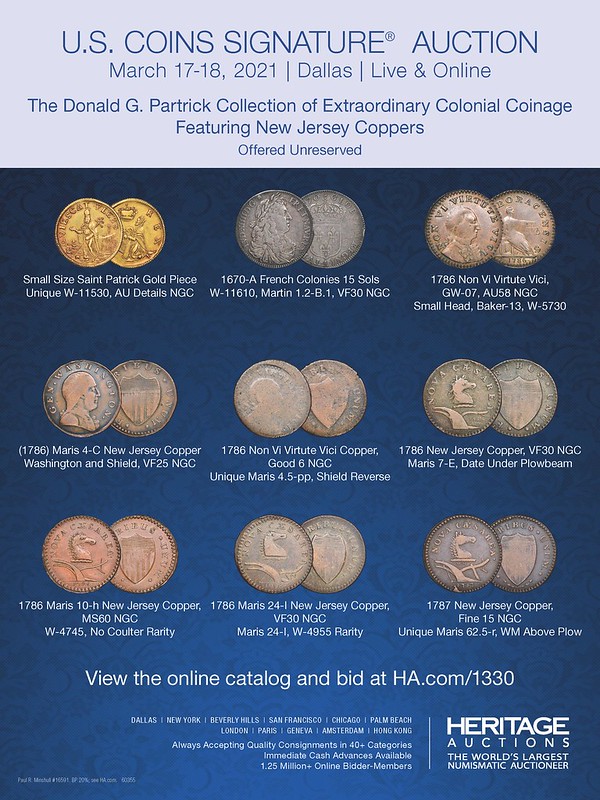
WHITMAN JUNE 2021 BALTIMORE EXPO CANCELLED
The COVID-19 cancellations continue - the latest casualty in the June 2021 Baltimore Expo. Here's the press release. -Editor
 The June 3–5, 2021, Whitman Coin & Collectibles Expo will not be held as the State of Maryland and the City of Baltimore continue to mitigate and recover from the COVID-19 coronavirus pandemic.
The June 3–5, 2021, Whitman Coin & Collectibles Expo will not be held as the State of Maryland and the City of Baltimore continue to mitigate and recover from the COVID-19 coronavirus pandemic.
The show's management plans an expanded "Mega Bourse" for the November Expo, one of the largest numismatic events of the year. It will be held at its regular venue, the Baltimore Convention Center.
Whitman Expo manager Lori Kraft said, "Our hearts go out to the front-line workers who continue to battle the pandemic, and to everyone who has lost a loved one to COVID-19. We're relieved to see progress on many fronts, but the City of Baltimore has indicated that it's not as ready as they'd hoped it would be to realistically plan for a June Expo. We understand and respect the City's decision to cancel large gatherings. Transportation remains a challenge, some hotels and restaurants are closed, and some venues that are open are operating with smaller workforces. These challenges will change as vaccinations move forward. While Baltimore remains as friendly and welcoming as ever, the city needs more time to gear back up and get ready to host large events and welcome thousands of Expo visitors again."
Kraft and her Expo team are now focusing on the November 2021 Baltimore Expo, with plans to make it the largest ever. "Our bourse will be expanded to accommodate not only the dealers who normally come to our November show, but also those who annually attend the March and June Expos," Kraft said. "If you're a first-time dealer and want to join in the November Mega Bourse, please get in touch. We expect that collectors and the general public will be attending in record numbers. Our goal is to have a fun, energetic Expo that's also comfortable and safe for everyone."
Collectors can expect a lineup of new Whitman Publishing books, and a slate of educational events and exhibits, at the November Expo.
Whitman's Guide Book of United States Coins, known hobby-wide as the "Red Book," celebrates its 75th anniversary in 2021. The November Baltimore Expo will be the scene of giveaways and programs in recognition of this numismatic milestone. In addition, the seventh edition of MEGA RED, the expanded 1,504-page version of the Red Book, will be available at the show. Its expanded feature section focuses on silver and modern dollars. By November, the United States Mint's new 2021 Morgan and Peace centennial silver dollars, and the new reverse designs of the American Eagle gold and silver bullion coins, should be available for collectors.
Updates and news about the Baltimore Expo will be posted at expo.whitman.com.
Stack's Bowers Galleries will provide details of its still-scheduled June 2021 auction on their web site, www.stacksbowers.com.
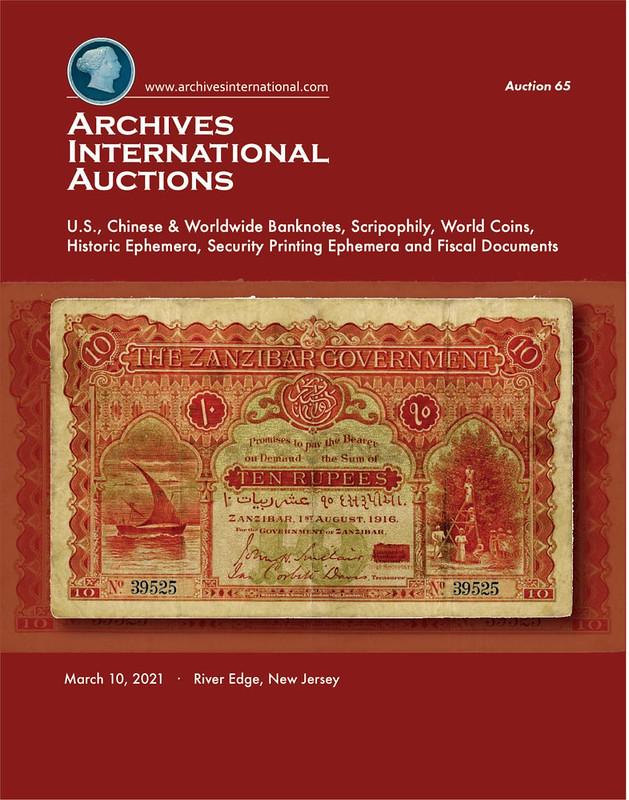
VOCABULARY TERM: COPIES AND REPLICAS
Here's another entry from Dick Johnson's Encyclopedia of Coin and Medal Terminology. The topic is Copies and Replicas, all important terms for collectors to know and understand. There are many nuances here. -Editor
Copies and Replicas. Not the original medallic or numismatic item, but a similar specimen. A wide variety of copies and replicas exist, both authorized and surreptitious, for which a large terminology has developed, including those terms listed here. Copy is a broad term that includes all items not the original; replica, likewise broad, includes all similar items to the original. The terms differ in that copy implies a closer resemblance to the original, replica may be more liberal in its exact replication.
The following criteria determine the precise term: (1) does authorization, approval or legality exist?, (2) intent of maker of the copy? (3) quality of workmanship? (4) use of original or new dies or molds? (5) how is the copy made – cast, struck, electrotype, or other?, and (6) any other diagnostic evidence?
Copies sometimes take on a life of their own and often become a collectible of their own. The Paduan copies of ancient coins, the Bashlow replicas of the U.S. Confederate Cent, the British Museum electrotypes, Bolen and Gallery Mint copies of early American coins, Becker counterfeits. These are all copies, desired by collectors, and infrequently more costly than the originals!
Kinds of Copies
Deluxe Copy – Made with authority for sale to the recipient only in better materials or workmanship than the original (as a decoration prepared in a more precious metal – it was issued in silver, but the recipient may order it made in gold at his own expense).
Custom Copy – Made with authority for sale as a second or subsequent copy (say for a second uniform) or to replace a lost original, or other official use; a custom order usually of one made by original maker and dies. Called replacement medal or sometimes jeweler's copy.
Reissue – Copy made with authority after lapse of time without change from original issue and reuse of original dies to strike a new piece or a new production run.
Revision – Copy made with authority and with a change of design no matter how minute, requiring retooling the original dies or creating entirely new copy dies. Such change might be a new date, new logo, change of sponsor's name, correct a design error, or similar reason.
Replica – Made with authority where a major portion of the previous design is used to make a new coin or medal. Replication is the most common form of copy making. No unauthorized use here, and new dies or molds are used to make the new issue.
Collectors' Copy – Made with authority for sales primarily to collectors or public; these copies are usually electrotypes (as copies sold by museums of specimens in their collections).
Reproduction – Made without authority and reproduced in a new model or composition. A large gray area of legality. Facsimile – Copy without authority, closely resembling the original and made by any method, as costume jewelry medals.
Private Copy – Made without authority for private use; these copies are usually cast in plaster or metal and if sold may be questionable status (study copies cast in plaster for scientific or scholarly study are certainly legal; private metal copies in off metal are a gray area, but copies the same as the original are outright forgeries).
Imitation – Copy made without authority and technically not illegal; usually of poor quality, or a souvenir status (to be given away), or play money (as child's play copies, or play coins).
Restrike – Copy made without authority from original dies at a later date (and often in deteriorated state, as struck from cracked or rusted dies).
Forgery – Copy made without authority and with intent to deceive.
Counterfeit – Copy made without authority and with intent to deceive and defraud both collectors and the public. Fake and spurious also denote a counterfeit status.
Copies Are Not The OriginalAll these terms have one thing in common: the objects are not the original, the first to be made and issued under authority. Another term, a contemporary copy, indicates the time when the replica was made – during the original issuing period (or sometimes during the lifespan of the artist). Contemporary copies of coins are, of course, counterfeits; however a thin line of legality exists if the coin has been demonetized; its counterfeits are subject to numismatic and scholarly study. But counterfeits of ancient coins, made contemporary to their original issue, are now historical objects and legal to own. Replicas of ancient coins made centuries later are forgeries as their maker's intent was to deceive subsequent buyers and collectors.
Cast medals. Cast medals are always suspect of being copies. Because of the ease of reproducing cast specimens it is important data to know the exact diameter of the artist's original mold, or his first casting. Other casts can be made from this original – or subsequent – casts. The term for this is called a generation. In the process of casting, metal shrinks slightly when it cools, each succeeding generation is one to four percent less diameter from the preceding generation. See after-cast, shrinkage.
Novodel. Replicas of older issues of coins, made at the same mint but struck from copy dies are called novodels. The word is derived from the Russian term where mints in Tsarist times made struck copies of early coins and medals as an accommodation for wealthy collectors. It may be a highly technical distinction but if the dies were made from the original hubs we would class this as a reissue; if these were made from copy dies – as we suspect – they would be classed as a revision (see above).
The replication of coins is always suspect; the replication of medals is not always so. We know of museum curators learning of an organization giving an award medal, contacting the organization for permission for a duplicate to be made for the museum's archives. Most of the time this permission was granted and the medal – made by the same manufacturer – ended up in their collections. (Technically this is a custom copy.)
German numismatists use the word abschlag for similar restruck items. Coins normally struck in silver, but restruck from original dies but in gold for presentation purposes are called abschlag. In the above list of terms, an instance of this would be called a deluxe copy.
Test for Authentication
Each suspected copy or replica must stand various tests for authentication. The first such test is for an experienced numismatist to compare the suspect item with a known original specimen. Other than weighing and measuring a specimen, tests employ scientific equipment must be made. The rising need of authentication, authentication service and laboratory testing gives testimony for proving the original status of any given item.
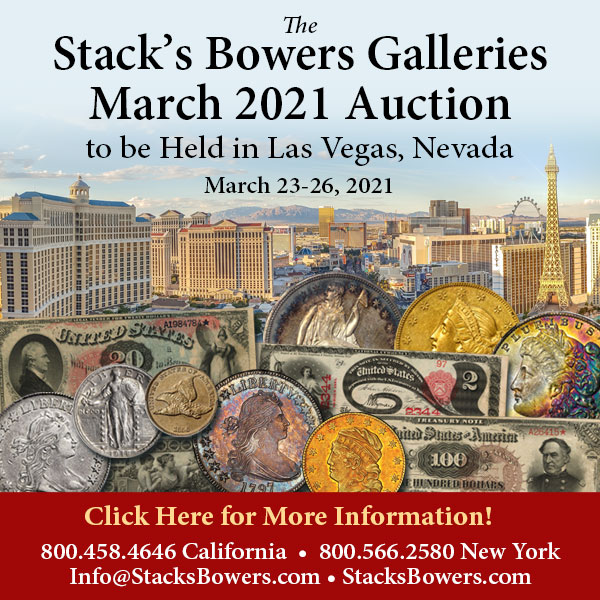
WILLIAM STEPHEN DISBROW, MD, PH. G. (1861-1922)
Here's another entry from the online draft of John Lupia's book of numismatic biographies. Thanks! This is an excerpt with the full article and bibliography available online. This week's subject is medical medal collector Dr. William Stephen Disbrow. -Editor
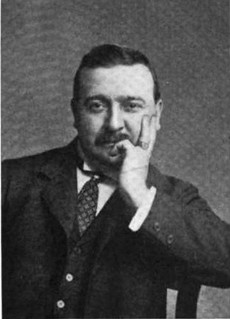 William Stephen Disbrow, MD, Ph. G. (1861-1922), was born on March 18, 1861 in Newark, NJ, the son of Henry Griffin Disbrow (1832-) and Catherine Cline Clickener (1834-).
William Stephen Disbrow, MD, Ph. G. (1861-1922), was born on March 18, 1861 in Newark, NJ, the son of Henry Griffin Disbrow (1832-) and Catherine Cline Clickener (1834-).
He attended Newark public schools.
In 1878, he was a licensed pharmacist in New Jersey.
In 1880, he graduated New York University, College of Pharmacy.
In 1887, he graduated New York University, College of Medicine.
On April 5, 1888, he married Clara E. Valentine (1861-). They had two children...
In 1894, Member ANA.
He sold his collection combined with O. P. Hayes and Wood of 1100 lots through the Chapman brothers on February 17,1896.
He is listed as ANA dues paid in 1897, and joined the Royal Arch Masons that same year.
He was a collector of Medical Medals rivaling that in Boston of Dr. Malcom Storer (1862-1935).
He was also a philatelist who collected U.S. and foreign stamps.
He sold his collection combined with Monroe J. Friedman of 1275 lots through the Chapman brothers on June 3-4, 1903. Adams rating B+.
He was president of the Essex County Medical Society 1905-1906.
He died on December 26, 1922, in Summit, New Jersey. He bequeathed part of his mineralogical collection to the Newark Museum and another part to the Smithsonian.
To read the complete article, see:
DISBROW, Dr. WILLIAM STEPHEN
(http://www.numismaticmall.com/numismaticmall-com/disbrow-dr-william-stephen)

GIVING BACK TO THE HOBBY WE LOVE
Martin Kaplan passed along this article by Jeff Garrett from his NGC blog. Here's an excerpt. Basically, it's a reminder to support the national organizations that support the great hobby we all share. -Editor
For decades, the hobby of numismatics has provided me with more benefits than anyone could ever hope for, from years of enjoyment to a pretty good living. Since assembling my first Lincoln Cent album in the 1960s, my enthusiasm has never waned. Many of my non-numismatic friends envy that I look forward to going to work every day. I sincerely hope that the hobby remains relevant so that future generations can enjoy the same pleasures numismatics has given me.
The future of numismatics, however, cannot be taken for granted. The hobby has been facing a serious problem of aging demographics. The average member of the American Numismatic Association (ANA) is now about 63 years old. Young people in our society today have become very distracted with technology and social media. Getting their attention is difficult, but not an impossible task. The ANA is committed to attracting and retaining young collectors. Considerable sums have been invested in the ANA website (Money.org) and other social media platforms trying to reach younger collectors.
The COVID-19 crisis has given the hobby an unexpected boost. Millions of collectors and potential collectors have been homebound and exploring the internet. Over the last year, the ANA membership grew over 10% to nearly 30,000 members. Online business is booming for anyone with a significant web presence. Hopefully, some of these new buyers are in a younger demographic than has been the case in the past.
This newfound interest in numismatics is an opportunity that hobby leaders should be sure not to waste. The ANA sadly was unable to host the annual Summer Seminar last year, and this year's event has recently been canceled. This major numismatic educational pillar of the ANA will be missed by anyone who attends it. In its place, the ANA has been able to offer streaming classes via Zoom. These have been a huge success, and they are clearly the future of the ANA educational offerings.
In 2019, I had the privilege of teaching advanced coin grading in Colorado Springs to about 25 students. Last year, my online class had over 300 participants (the class is also available on the ANA website permanently and can be watched for free). Students could attend the classes from home without the expense and time of traveling to Colorado. We all know how wonderful in-person classes are during Summer Seminar, but the broad impact of online numismatic education cannot be denied.
Securing the future success of the ANA and coin collecting is an expensive proposition. No other organization does more to promote the hobby and provide numismatic education than the ANA. Each year, the ANA awards dozens of numismatic scholarships for the Summer Seminar to young people, many of whom later say the experience changed their lives. Now, the ANA is investing lots of staff time and financial resources in online education.
Without the financial support and volunteer efforts of the numismatic community, the ANA could not survive. For our members to continue to receive the benefits they have come to expect, we must all think of the ANA with our charitable giving. There is no better way to support the hobby we all love than a contribution to the ANA.
For more information on the American Numismatic Association, see:
https://www.money.org/
To read the complete article, see:
Jeff Garrett: Giving Back to the Hobby You Love
(https://www.ngccoin.com/news/article/8891/)
THE ANS IS SEEKING A DEPUTY DIRECTOR
Meanwhile, the New York City based American Numismatic Society is seeking a Deputy Director. Here's an excerpt from the press release. -Editor
General job description
 The American Numismatic Society (ANS) is seeking to hire a Deputy Director. The Deputy Director is
a senior member of the management team of the American Numismatic Society. S/he directly reports
to the Executive Director and attends all meetings of the Board of Trustees as well as meetings of the
Executive Committee. S/he represents the Society in the absence of the Executive Director. S/he is
responsible for directly supervising the financial, administrative, technology, library, and publication
matters of the American Numismatic Society.
The American Numismatic Society (ANS) is seeking to hire a Deputy Director. The Deputy Director is
a senior member of the management team of the American Numismatic Society. S/he directly reports
to the Executive Director and attends all meetings of the Board of Trustees as well as meetings of the
Executive Committee. S/he represents the Society in the absence of the Executive Director. S/he is
responsible for directly supervising the financial, administrative, technology, library, and publication
matters of the American Numismatic Society.
The Deputy Director is expected to acquire a solid knowledge of all aspects of the Society.
The Deputy Director shall be prepared to represent the American Numismatic Society at public events, and support the Executive Director in promoting the mission of the Society.
About the ANS
The American Numismatic Society is dedicated to the study and public appreciation of coins, currencies, medals, and other related objects. Since its founding in 1858, the ANS has assembled a permanent
collection with over 800,000 objects dating from 650 BCE to the present and a numismatic library,
which houses approximately 100,000 books, documents, and artifacts. These resources are used to
support publications of books and periodicals, lectures, academic seminars, and exhibitions.
Qualifications
The position requires a proven and significant track record of dealing with all aspects of finance,
accounting, budgeting, and administration acquired in an academic, education, or museum context.
Prior experience in managing a team of people is essential. The Deputy Director should have excellent
communication skills and be able to speak in public to larger audiences, in-person and digitally. S/he
will have published, researched, and/or taught in in the field of numismatics. A graduate degree in a
relevant field is a requirement, a PhD being preferred.
To read the complete announcement with details on how to apply, see:
The ANS is seeking to hire a Deputy Director
(http://numismatics.org/the-ans-is-seeking-to-hire-a-deputy-director/)

ALEXANDER TETRADRACHMS: DAVISSON AUCTION 40
Lief Davisson published an article by email February 12, 2021 highlighting an interesting group of Alexander tetradrachms in the upcoming Davisson's Auction 40. With permission. we're republishing it here. I don't collect these, but maybe everyone should. I was unaware of the interesting variety in the series. -Editor
Alexander tetradrachms are familiar to all collectors of ancient coins, but in a series so large that covers such a vast swath of history (and geography) what sets one above another? Artistry, rarity, and historical significance all play into the seven choice pieces we have selected for this auction.
First are two of the finest coins in the auction, both rare issues from Memphis. The tetradrachms of Alexander from the mint of Memphis, the ancient capital of Egypt, are arguably the most dramatically beautiful of all the coins struck in his name. The die engravers harnessed majestic power by utilizing high relief and unusual sculptural quality, making these coins stylistically among the finest silver coins of Alexander ever made.
The first, above, is the rarest of the Memphis mint issues. The crowned ram's head on this famous issue is traditionally associated with Khnum, the god of the source of the Nile, but recent scholarship argues that it may depict Amun, the source of Egyptian kingship and the god with whom Alexander was particularly associated (Lorber, CPE). This issue has been traditionally cataloged as a lifetime issue, c. 332-323 B.C., as in Price 3964, however the latest (2018) Lorber volume (CPE) settles on 323/2 B.C. Lorber notes that the symbol represents the accession of Philip III, hence supporting the position that this is, albeit barely, not a lifetime issue.
This second Memphis issue, while also quite rare, is noteworthy for the beautiful style of Alexander. These two and the civic issue from Thrace below are all from an American collection formed in the 1940s and 1950s, by a collector who corresponded with dealers and auction houses in the U.S. and England, notably the traditional English houses Spink &l Son and Glendinings &l Co. in London, and Edward Gans of Numismatic Fine Arts in New York City. Obtaining coins of this quality today is a tremendous challenge. One of our current clients commented he doubted they would be available on the open market today, but only through private treaty if at all.
One more issue from Egypt (probably Memphis as well) is this tetradrachm of Ptolemy I, with its rare depiction of Athena Alkidemos with her left breast bare. (It came to its discriminating collector via Edward Waddell.) Ptolemy I Soter "(Savior"), son of the Macedonian nobleman Lagus, was a friend and intimate of Alexander III the Great from boyhood and accompanied him on his conquests in 333-323 B.C. Upon Alexander's death in 323 B.C. Ptolemy was granted the prized satrapy of Egypt, richest of the Persian provinces. Ptolemy's early coinage carries Alexander's image and name, as seen on this remarkable tetradrachm, which depicts the great conqueror wearing an elaborate elephant-skin headdress in honor of his victories in India. Ptolemy declared his own kingship in 306 B.C. and was the only one of the Diadochi ("successors") to die peacefully, in his bed. His dynasty ruled Egypt until the fall of Cleopatra VII in 30 B.C.
Moving across the Mediterranean, this wild civic issue from Odessos in Thrace was struck around 200 years after the Memphis issues. From the same 1950s collection as the first two coins above, this issue was struck to pay both Roman and Pontic legionnaires in the late second and early first centuries B.C., using the familiar types of Alexander III which were trusted by the soldiers. This example stylistically has a remarkable floral grandeur. While not so rare as coins from Memphis, examples of this quality are genuinely rare by virtue of condition.
This beautiful Cilician issue was struck shortly after Alexander's death in 323 B.C. Well centered and struck, of fine style and with beautifully toned fresh surfaces, it is another true condition rarity.
More modest in aspect though not in historicity, this characteristically small flan tetradrachm of Antigonos I Monophthalmos (the "one-eyed") was struck circa 316-311 B.C. in Susa (modern day Iran). Antigonos I, a general under both Philip II and Alexander and founder of the Antigonid dynasty, was a major player in the Wars of the Diadochi following Alexander's death.
Finally, this coin of another of Alexander's generals (Seleukos I Nikator) does not bear Alexander's name and so does not quite go with the other lots here, but the style, quality, and pedigree (Ex Arthur Houghton) all make it worthy of attention.
As dealers and auctioneers we have the pleasure of being the brief custodian of many incredible coins (although we sadly rarely get to keep them), but this Alexander offering is arguably finer than any we have previously handled. I hope you find them as fascinating and beautiful as we do.
For more information on the sale closing March 3, 2021, see:
https://davcoin.com/

DNW WORLD BANKNOTE SALE FEBRUARY 2021
Here's the press release for an upcoming Dix Noonan Webb sale of British, Irish and World Banknotes. Nice material. -Editor
An Irish £10 Banknote from the iconic ploughman series is expected to fetch £22,000-26,000 at Dix Noonan Webb in their live/ online auction of British, Irish and World Banknotes on Wednesday, February 24, 2021 at 10am on their website www.dnw.co.uk.
The very fine and extremely rare Northern Bank Ltd note dates from May 6, 1929 and is being offered by a private collector. The only known example of a £50 note from the Belfast Banking Company Limited, dating from December 7, 1917 is also offered and is estimated at £8,000-10,000. An even older Irish note on sale is a very attractive £20 printed in blue, from the Provincial Bank of Ireland Ltd, dating from October 20 1904, which is expected to fetch £5,000-6,000.
Another Irish note of interest are the die proofs for the Ulster Bank Limited's George Best commemorative £5 dating from November 25, 2006. Estimated at £400-500, they feature the iconic footballer George Best and represent part of the design process for the final note. The note itself was sold commercially in numbered folders and remains the most popular commemorative banknote ever produced in the UK.
An extremely rare £1 note from the Bank of Ireland (Dublin and Westport) dating from 1838 is expected to fetch £9,000-11,000. The Bank of Ireland, founded in 1783, was the first national bank for the country. It was based in Dublin and only began to open branches outside the capital after legislation passed in 1825 which opened the way for competition from new banking groups. In that year the branch in Westport was one of the first to open in the country. All banks were now required to make their notes payable at each place of issue, although the majority were still issued in Dublin. This Dublin-Westport note was part of a new issue and new design introduced in 1838, incorporating statues of Hibernia and a row of classical heads representing Medusa. Both elements were retained through changing banknote designs up to recent years. From 1825 onwards the Bank was issuing notes for £1, 30 Shillings, £5, £10, £20 and £50. In 1845 it issued its first note for £3 and continued with this denomination for the next 70 years. All surviving notes issued by the Bank of Ireland before the mid-19th Century are extremely rare
The highlight of the British banknotes is a superb specimen of a Bank of England £50 - a design that remained unchanged for almost 150 years. The note, which is estimated at £6,000-8,000, is hand-annotated by the then Chief Cashier, Matthew Marshall, stating "Specimen, M. Marshall, Bank of England, 30 December 1858," presumably offering his approval for the design.
Elsewhere in the sale, which comprises 875 lots is Part Two of a remarkable Collection of Bank of England printing errors. Of the 42 lots, one of the earliest from November 21, 1955, and is a £1 note with the entire reverse printing missing, estimated at £340-400, while a uncirculated £5 note from 1993 with large flap of extra paper at the top right carries an estimate of £300-360. Also among the British notes is a very interesting group of 23 lots of Military Notes. Issued to those serving overseas in the British Armed Forces in the years following the Second World War, a rare and uncirculated specimen set of seven notes dating from 1948 comprising 3 and 6 Pence, 1 Shilling, 2 Shillings and 6 Pence, 5 and 10 Shillings, and £1 – is estimated at £1,500-2,000, while an extremely rare 1 Shilling note from 1946, with an ink stamp indicating it was only to be used by the Naval, Army and Air Force Institutes (NAAFI), is expected to fetch £1,400-1,800.
Andrew Pattison, Head of Department, Banknotes, Dix Noonan Webb, explains: "The Irish section is exceptional and features several incredibly rare types and a few that might even be unique. Most of them haven't come to the market for well over a decade. Many of them are actually the very notes pictured in the standard reference work for the subject, Paper Money of Ireland. This auction is likely to be the only chance collectors will have to acquire these incredibly pieces of history for years to come."
He went onto say about the George Best notes: "It is quite possible these are the only surviving examples of this part of the design, and are certainly the only ones any of our specialists have ever seen. While George Best is certainly the only footballer to appear on a British Banknote, he misses out on the accolade of being the first sportsperson on a British banknote by only two years, because the Royal Bank of Scotland issued two banknotes with a golf theme in 2004 and 2005, featuring Old Tom Morris and Jack Nicklaus respectively."
He continues: "The George Best notes are being sold by a private collector. Proofs like this were made specifically to test the clarity or the metal plates that would be used to print the real notes so the quantity produced for each type of note varies. It is however very unlikely that many copies were kept - one was usually sufficient for the printers' records. The others will have simply been discarded as waste. To my knowledge these are the only ones to have surfaced in 15 years."
He finishes by saying: "We are very pleased to be including the Collection of British Military Notes - there have been very few of these on the market in recent times, and with printers archival sources for these notes have long since dried up, this might represent a final chance to obtain them for quite some time."
For more information, see:
https://www.dnw.co.uk/

ARCHIVES INTERNATIONAL AUCTION 65
Here is the announcement for the March 10, 2021 sale by Archives International Auctions. -Editor
ARCHIVES INTERNATIONAL AUCTIONS OFFERS HISTORIC ZANZIBAR, 1916, 10 RUPEES BANKNOTE RARITY ALONG WITH HUNDREDS OF RARE BANKNOTES, BONDS AND SHARES AT ITS MARCH 10TH , 2021 PUBLIC AUCTION IN RIVER EDGE, NEW JERSEY
The auction will be held by Archives International Auctions at their offices in River Edge, N.J.
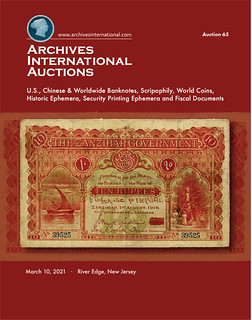
The March 10th, 2021 auction, held in 3 sessions, by Archives International Auctions is highlighted by a Zanzibar Government, 1916, 10 Rupees Banknote Rarity. The auction will consist of 1189 lots of rare and desirable U.S. & World Banknotes, Scripophily, World Coins, Historic Ephemera and Security Printing Ephemera. Session 1 begins with 455 lots of Worldwide and Chinese Banknotes and Chinese Scripophily followed by 8 lots of Israel Silver Commemoratives. Session 2 consists of 171 lots of U.S. Colonial Banknotes, U.S. Obsolete, Fractional Confederate, Large and Small Type, Depression Scrip and MPC banknotes with many desirable notes offered. Session 3 begins with 451 lots of U.S. and World Scripophily followed by U.S. Liberty Loan Bonds, Federal Bonds, Documents and Fiscal paper. The auction closes out with Security Printing Ephemera, Historic Ephemera and Checks, Drafts and Exchanges.
"During this difficult time period for our country and the world, we are striving to offer our clients and friends items of historical and collecting interest that have been off the market for decades or are new to the collecting world. We hope this auction will add a small amount of enjoyment to everyone's lives", stated Dr. Robert Schwartz, President of Archives International Auctions. "Included in the upcoming auction is a wide variety or rare, interesting and desirable numismatic and historical objects to enhance the collections of every level of collector and dealer".
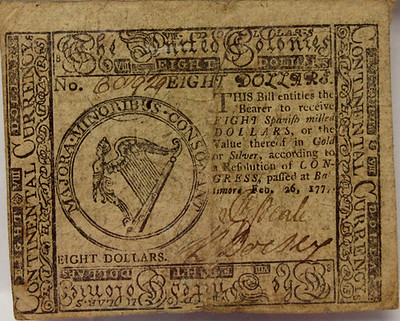 The auction begins with hundreds of World Banknotes with many desirable notes having never been offered previously at auction. The Government of Zanzibar banknote is one of many highlights offered in the auction. Additional highlights include a Dominion of Canada, 1924, $5, DC-27 Issued high grade Banknote, one of the finest known; and a Nicaragua. William Walker Military Script, 1856 Issued $25 Banknote Rarity with literally hundreds of lots of banknotes including many group lots from an old-time dealer's stock. U.S. banknotes are highlighted by a desirable group of Delaware, Maryland and Pennsylvania Colonial banknotes; a wide selection of attractive Obsolete banknotes is followed by Fractional Currency highlighted by a 50 Cents, Third Issue, Fr#1331, PMG Gem Unc 65 EPQ example. Confederate Currency includes 41 lots from an old-time collection with many desirable examples as well as small group lots. Large type notes are highlighted by a U.S. Note, Fr. 60, $2, 1917 Legal Tender Cut Sheet of 4 Notes as well as many other desirable examples. National Banknotes are highlighted by 4 Nevada Nationals from Ely, Elko and Reno as well as an uncut sheet of 6 notes from The Woodbine National Bank, $5, 1929 T-2, CH#12977 in Choice AU to Uncirculated Condition.
The auction begins with hundreds of World Banknotes with many desirable notes having never been offered previously at auction. The Government of Zanzibar banknote is one of many highlights offered in the auction. Additional highlights include a Dominion of Canada, 1924, $5, DC-27 Issued high grade Banknote, one of the finest known; and a Nicaragua. William Walker Military Script, 1856 Issued $25 Banknote Rarity with literally hundreds of lots of banknotes including many group lots from an old-time dealer's stock. U.S. banknotes are highlighted by a desirable group of Delaware, Maryland and Pennsylvania Colonial banknotes; a wide selection of attractive Obsolete banknotes is followed by Fractional Currency highlighted by a 50 Cents, Third Issue, Fr#1331, PMG Gem Unc 65 EPQ example. Confederate Currency includes 41 lots from an old-time collection with many desirable examples as well as small group lots. Large type notes are highlighted by a U.S. Note, Fr. 60, $2, 1917 Legal Tender Cut Sheet of 4 Notes as well as many other desirable examples. National Banknotes are highlighted by 4 Nevada Nationals from Ely, Elko and Reno as well as an uncut sheet of 6 notes from The Woodbine National Bank, $5, 1929 T-2, CH#12977 in Choice AU to Uncirculated Condition.
U.S. and World Scripophily include 451 lots of Automobiles to Railroads to Mining and World Bonds and Shares with many rarities present. Following the Scripophily section are 100 Lots of U.S. Federal Bonds and Liberty Loan Bonds, Security Printing Ephemera, Historic Ephemera and Checks, Drafts & Exchanges.
Previews will be limited and by appointment only and we will be observing strict safety precautions including the wearing of masks and observing social distancing to protect our team as well as our guests. We will do our best to accommodate anyone who desires additional information and photographs. For questions, please call 201-944-4800 or email info@archivesinternational.com.
The online catalog for the March 10th , 2021 auction is on Archives International Auctions' website and can be viewed via the Archives International live bidding platform. It can also be viewed as a Virtual Catalog or downloadable Sale 65.pdf on our website. To pre-register for Live Internet Bidding, log on to the Archives International Auctions website, at www.ArchivesInternational.com.
Archives International is now working on their Late Winter and Spring 2021 auctions and are seeking quality consignments for future auctions or outright purchase including U.S. and worldwide banknotes, coins, stocks, bonds, stamps, postal history, historic ephemera, and autographs. To sell or consign one piece or an entire collection, please call AIA at (201) 944-4800; or e-mail them at info@archivesinternational.com.
You may also write to Archives International Auctions, at 1060 Main Street, River Edge, NJ 07661, U.S.A. To learn more about Archives International Auctions and the auctions planned for March 10th, 2021, log on to www.ArchivesInternational.com.

SELECTIONS FROM KAGIN'S MARCH 2021 SALE
Cataloguer Bob Leonard recommended these selections from the upcoming Kagin's sale. Some great items here - most are from the Opitz consignment of Odd & Curious money. Thanks! -Editor
Lot 3030: California Gold 1854 Defiant eagle, BG-220
1854 Defiant eagle, BG-220, PCGS AU55. Rarity 7. Defiant eagle left on torse, date below; 25 CENTS in wreath.
With the Arms of California half and the round dollar with G.G. and eagle, this is one of the three most highly coveted Period One coins; extremely rare, there are 10 or fewer known. For Doering, "the king of fractional gold." However, its distinctive design, late appearance, and heavy weight (it contains close to full value of native California gold) have caused its authenticity to be questioned. California gold scholar Mike Locke has expressed doubts because of its late appearance, high weight and purity, and extreme rarity.
Several features of this issue, though, point unmistakably to an 1850's date. The die work appears to be that of the 1850's. The denomination of 25 cents is found elsewhere only on the very earliest round quarters of 1853; later issues, and all Period Three pieces and "token" imitations, use the fraction 1/4 (in 1838 the denomination on U.S. quarters was changed from 25 C. to QUAR. DOL., and it has been a quarter dollar ever since). Finally, the slanting 5 of the date is found on many U.S. coins of the early 1850's (only); it is said to be a peculiarity of Mint engraver James B. Longacre, 1844-1869. Later coins revert to an upright 5, as seen on fractional gold from 1859 on and all Period Three pieces. But the date on the Defiant Eagle 25 cents is very similar—except for size—to that on the 1854 Kellogg & Co. $20.
The Defiant Eagle type—unique among small California gold designs—was generally unknown to numismatics until two examples surfaced in Henry Chapman's auction of the Andrew C. Zabriskie Collection, June 3-4, 1909. However, another example was in the collection of Robert C.H. Brock of Philadelphia, who collected actively from the 1880s to the 1890s and who donated his collection to the University of Pennsylvania in 1898; it was purchased with the rest of his coins by B. Max Mehl in 1952 and sold at auction Nov. 30, 1954.
But how did Zabriskie get these Defiant Eagle coins in the first place? In 1873 or 1874, he purchased the California coin collection of U.S. Assayer of Gold Augustus Humbert from his California executors. Presumably he found a few of these coins in an envelope, unused, and began trading them to other collectors, retaining two for himself. (Zabriskie joined the American Numismatic Society in 1874.) Sadly, we may never know! (PCGS AU55)
Ex Dennis Steinmetz 1983, ex Jeff Garrett, Lexington, KY circa 1982-83, ex NERCA, 4/10/1981, lot 1498, $12,650, ex Ken Goldman, Boston, MA (joined PNG 1975), paid $1,750, ex unknown intermediaries, ex Andrew C. Zabriskie before 1909 (?), ex Augustus Humbert 1873 or 1874 (?), ex M. Jordan and Gottard Koehler partnership, San Francisco (dissolved 1854)(?)
Lot 4074: Borneo Cannon Money
Huge example of genuine Borneo cannon money on modern display stand. In the 19th century brass was so valuable in Brunei, Sabah, and Sarawak that models of Portuguese cannon were used for purchases of slaves and payment of fines. They were actually fired during weddings, birth of children, and visits of dignitaries. See Quiggin, pp. 260-61 and Fig. 116, and Opitz, p. 100 (illustrated right center).
Cool! -Editor
Lot 4236: Taiwan Bead Jacket
 Perhaps the rarest and most valuable item (at the time) in the entire auction is this beaded jacket made by members of the aboriginal (Gaoshan in Chinese) Atayal headhunter tribe of the mountainous northeast portion of Taiwan, before 1900. Each jacket has about 2,600 strings of beads, and each string has about 20 to 25 beads, depending on size. So the whole jacket is covered with over 50,000 stone or shell beads, each hand made by a native one at a time. They were then sewn to hand-dyed, homespun cloth. A single jacket took over a year to make. Naturally they were extremely valuable; such a jacket could purchase fine cattle—or several wives.
Perhaps the rarest and most valuable item (at the time) in the entire auction is this beaded jacket made by members of the aboriginal (Gaoshan in Chinese) Atayal headhunter tribe of the mountainous northeast portion of Taiwan, before 1900. Each jacket has about 2,600 strings of beads, and each string has about 20 to 25 beads, depending on size. So the whole jacket is covered with over 50,000 stone or shell beads, each hand made by a native one at a time. They were then sewn to hand-dyed, homespun cloth. A single jacket took over a year to make. Naturally they were extremely valuable; such a jacket could purchase fine cattle—or several wives.
During the Japanese occupation of Taiwan, 1895-1945, many jackets were taken to Japan and cut up for their beautiful beadwork. When an original jacket was discovered in Taiwan seven years ago, it was a major news story. See Opitz, pp. 166-67.
Believed to be ex Hans M.F. Schulman George L. Lee Collection Auction, Part I (Feb. 14, 1958), lot 949 (unsold), then Hans M.F. Schulman Public Auction Sale Feb. 28, 1959, lot 2418, to Nate S. Shapiro, to Detroit Money Museum Apr. 28, 1960; sold at Craig A. Whitford auction Nov. 30, 1992; bought by Ken Bressett. It hung in Ken's closet for years until his wife, Bert, made him get rid of it, and Mr. Opitz was able to acquire it in trade.
Interesting and unusual - great display piece. -Editor
Lot 4254: 1791 20 Sols Playing Card Money
France, 1791 playing card money for 20 sols issued by Ville de Saint-Maixent during the French Revolution. Printed on back of a 10 of spades playing card. Clear printing, one signature faint. See Opitz, p. 261.
Great example of improvised emergency money. -Editor
Lot 4255: 1574 Leiden Siege 5 Sols
Netherlands, Leiden, besieged by the Spanish, May 26-October 3, 1574. When the Dutch revolted against harsh Spanish rule, beginning the Eighty Years' War, the Spanish attempted to crush them by sending the merciless Duke of Alba. Massacres took place even at cities that surrendered to him. The Dutch leader William the Silent, Prince of Orange, asked Leiden to hold out for three months and he would relieve them. The only communication with Leiden was by carrier pigeon; on August 21, the mayor informed the Prince that they had held out for three months, two with food and one without food. The only possible relief was by sea, so the Dutch cut the dykes and approached in over 200 flat-bottomed boats. Progress was slow, and it took over two months to reach Leiden, at which point the Spanish retreated and the city was saved, though thousands had starved to death and almost 8,000 more died from an outbreak of the plague.
Leiden minted coins in gold, silver, and copper during the siege, but when the mayor requisitioned all metal for weapons and ammunition, they pasted together pages from precious Books of Hours, hymnals, and even the Holy Bible, to make pasteboard planchets to strike coins. (This is the first official paper money issued in Europe.) 5 sols 1574, paper; Lion with sword/legend; two validation counterstamps. Mailliet 3. VF, small planchet clip. Rare and in great demand. See Opitz, p. 272 (this example illustrated, top right).
Rare, interesting and seldom seen; a great piece for the numismatic bibliophile - not a book about coins, but a coin made from a book! -Editor
For more information, see:
https://www.kagins.com/
https://www.kagins.com/kagin-s-2021-auction-march-11th-12th-san-francisco-area

NUMISMATIC NUGGETS: FEBRUARY 21, 2021
Here's a selection of interesting or unusual items I came across in the marketplace this week. Tell us what you think of some of these. -Editor
Calabria Didrachm
Calabria. Tarent.
Didrachm or Nomos (silver). Approx. 240-228 BC Chr.
Vs: Naked youth on horseback riding to the right with his arm raised; between the legs of the Magistrate of Philocles; two monograms in the fields.
Rs: Naked Taras with trident on dolphin riding to the left, holding a rhyton in his right; in the field on the right two Loutrophoroi side by side.
20 mm. 6.61 g.
HN Italy 1057; Vlasto 950 Coll. Excellent.
From the upcoming Solidus sale. Google-translated. -Editor
To read the complete lot description, see:
Lot 27. Kalabrien. Tarent.
(https://www.sixbid.com/en/solidus-numismatik/8238/griechische-mnzen/6798610/kalabrien-tarent)
1816 U.S. Large Cent Rhode Island Counterstamps
1816 U.S. Large Cent
Counterstamp "PASSMORE / SMITHFIELD"
The two countermarks are stamped perpendicular to (and across) each other. Both punches are raised letters in relief, but each has a different style. The first letter of each punch is partly off the coin.
Research Notes:
Comstock Passmore (1781 - 1825) is listed as working in Smithfield, Rhode Island from 1805-1825. He made scythes, he succeeded Elisha Bartlett, and he was succeeded by Otis Bartlett (who also countermarked coins).
The two countermarks were probably made for stamping onto the scythes that they manufactured.
Issuer: Comstock Passmore
Occupation: Scythe Works [Factory / Workshop]
Date of issue: 1816-1825
Place of issue: Smithfield, Providence County, Rhode Island
Brunk P-193.
Great counterstamp with a super history. Counterstamps are rarely so large and pronounced. The piece clearly shows the expected wear pattern on the reverse, evidence of post-stamping circulation. From the eBay offerings of Bob Merchant. -Editor
To read the complete lot description, see:
1816 U.S. Large Cent, Counterstamp "PASSMORE / SMITHFIELD" Early Rhode Island
(https://www.ebay.com/itm/1816-U-S-Large-Cent-Counterstamp-PASSMORE-SMITHFIELD-Early-Rhode-Island/133664920706)
1900 Boxer Rebellion Medal
The reverse design of the China Medal echoes the Orient as is appropriate seeing it was awarded to British and Imperial forces for action during the 'Boxer Rebellion' of 1900. Western missionaries and Chinese Christians were under attack from a group calling themselves the 'Righteous and Harmonious Fists,' or the 'Boxers' for short, who had set out to ruthlessly destroy Western cultural and religious influence in China. Nine countries, including Britain and Australia were keen to maintain their profitable commercial interests in China and so sent military forces ostensibly to protect their citizens and quell the uprising. The China Medal in our sale was awarded to W.H. LITTLEFIELD. A.B. H.M.S ARETHUSA who was one of over 8000 British recipients and, like most people returning from war, he would have counted his lucky stars that he had survived to tell the tale.
Auctioned earlier this week in Australia. -Editor
To read the complete lot description, see:
Lot 111: Australia/Britain. China War Medal, 1900. W.H. LITTLEFIELD./A.B./H.M.S. ARETHUSA', about Uncirculated
(https://www.invaluable.com/auction-lot/Australia-Britain.-China-War-Medal,-1900.-W.H.-LI-111-c-80A4BB19AB)
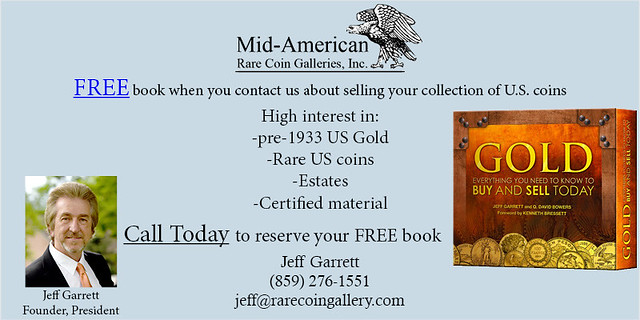
THE LIBERIAN EXODUS
Here's another one of John Kraljevich's Black History Month articles on Facebook. This one focuses on the Republic of Liberia. -Editor
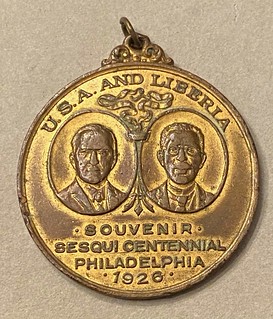 Liberia declared its independence in 1847, but it traces its history back decades more, to the founding of the American Colonization Society in 1816. As American-born Blacks decided to leave the United States for Africa — often under less than voluntary conditions — they gathered along the Atlantic coast in Liberia, adjacent to Sierra Leone, where former British subjects of African descent had created a similar new nation. Poor relationships with the indigenous Africans who already lived there made the first years of the Liberian experiments especially challenging, a fact not lost on those who sought to move there in the 1870s. The violence and uncertainty they faced in South Carolina made the risks seem worth it.
Liberia declared its independence in 1847, but it traces its history back decades more, to the founding of the American Colonization Society in 1816. As American-born Blacks decided to leave the United States for Africa — often under less than voluntary conditions — they gathered along the Atlantic coast in Liberia, adjacent to Sierra Leone, where former British subjects of African descent had created a similar new nation. Poor relationships with the indigenous Africans who already lived there made the first years of the Liberian experiments especially challenging, a fact not lost on those who sought to move there in the 1870s. The violence and uncertainty they faced in South Carolina made the risks seem worth it.
On April 21, 1878, the ship Azor, owned by the Liberian Exodus Joint Stock Steamship Company, left from Charleston with 206 Americans on board who planned to never return. Twenty-three of them died on the month-long journey. The Azor arrived in Sierra Leone on May 19, resupplied, and pulled into port in Liberia on June 3. Though the promise of Liberian life and the ease of prosperity there was exaggerated to those who emigrated, 173 of the original 183 emigrants were still in Liberia after two years. The families who arrived on the Azor evolved into some of the leading families of Liberia, almost a caste unto themselves, identifying as Americo-Liberians as time went on. They would become African-American Africans.
Among those who made the voyage on the Azor was William Richard Tolbert, who hailed from tiny Ninety-Six, South Carolina, a town most famous for the small Revolutionary War battle fought there. Tolbert, then 11 years old, traveled to Liberia with his father and his sister to begin a new life, far away from Red Shirts who ran amuck in the part of South Carolina they had long called home. William Richard Tolbert Jr., the son of an African-American emigre and the grandson of a man formerly enslaved in South Carolina, became the vice president of Liberia on January 1, 1952. He served five and a half terms as vice president. On July 23, 1971, he became president upon the death of then-president William Tubman, whose grandparents were Georgia-born African Americans who were sent to Liberia in 1844 by their former owner.
Tolbert was killed in a violent coup in 1980.
The silver medal displayed below, struck for their 1956 inauguration, shows the jugate profiles of Tolbert and Tubman, the grandsons of African-Americans who had become definitively African.
To read the complete article, see:
Black History Month, 2021. Day 13.
(https://www.facebook.com/john.kraljevich/posts/10226064772385662)
Here are some additional posts in John's series. -Editor
To read the complete articles, see:
Black History Month, 2021. Day 14.
(https://www.facebook.com/john.kraljevich/posts/10226075134884718)
Black History Month, 2021. Day 15.
(https://www.facebook.com/john.kraljevich/posts/10226084605601480)
Black History Month, 2021. Day 16.
(https://www.facebook.com/john.kraljevich/posts/10226099464732949)
Black History Month, 2021. Day 17.
(https://www.facebook.com/john.kraljevich/posts/10226103235787223)
Black History Month, 2021. Day 18.
(https://www.facebook.com/john.kraljevich/posts/10226112358015273)
Black History Month, 2021. Day 19.
(https://www.facebook.com/john.kraljevich/posts/10226127335589703)
Black History Month, 2021. Day 20.
(https://www.facebook.com/john.kraljevich/posts/10226128200771332)
To read the earlier E-Sylum articles, see:
1971 BLACK AMERICAN DAY MEDAL
(https://www.coinbooks.org/v24/esylum_v24n06a33.html)
THE NEW HARLEM OF SEATTLE TRADE TOKEN
(https://www.coinbooks.org/v24/esylum_v24n07a29.html)

NEGRO COMMEMORATIVE SOCIETY MEDALS
American Numismatic Society intern Jaharia Knowles authored this ANS Pocket Change blog post about the American Negro Commemorative Society medals. Here's an excerpt. -Editor
George A. Beach, a 32-year-old advertising designer based in Pennsylvania founded the Society in collaboration with the Franklin Mint for the purpose of highlighting Black American historical figures. With the ANCS, Beach sought to educate Americans, especially Black Americans, on influential Black figures who were often left out of "traditional," whitewashed narratives of American history. The subjects featured on the medals lived as early as the Revolutionary era, illustrating how ingrained Black people are in the nation's history. In fact, many of those featured were pioneers in their field, such as W. C. Handy, self-proclaimed "Father of the Blues," and George Washington Carver, who made significant contributions to the study of agriculture in the early twentieth century.
The commemoration of Black historical figures on medals, at least in the United States, was unprecedented. The ANCS addressed this in one of their advertisements, saying, "Many notable American Negroes were given some recognition in their time, but nearly all have been sadly neglected in numismatics. We hope to fill that void." The ANCS's efforts to highlight previously overlooked Black Americans was part of a greater push to include Black history in American history started earlier in the century by Carter G. Woodson, founder of the Association for the Study of African American Life and History (also featured on one of the ANCS medals).
While some of the Black Americans featured on the ANCS' medals have become household names, such as Frederick Douglass and Harriet Tubman, others are not as well-known. For instance, Jean Baptiste Pointe Du Sable, a tradesman and the first non-indigenous permanent resident of Chicago, had not been recognized for his role in the city's history until recently. For decades, John Kinzie, a white Canadian who bought Du Sable's property in 1804, had been wrongly given the title. While that began to change in the early twentieth century due to the determination of African-American led groups in Chicago, many Americans, even Chicagoans, were unfamiliar with Du Sable. The ANCS's commemoration of the tradesman was part of a long mission to redress a historical wrong. Today, Du Sable is widely recognized as the "Father of Chicago," but that would have been impossible without the contributions of Black activists, writers, and organizations, including the ANCS.
In a forthcoming feature in the ANS Magazine, I will offer an in-depth look at all 64 medals and explore other aspects of the Society, including the marketing of the medals, their reception, and the ANCS's ultimate demise.
To read the complete article, see:
THE AMERICAN NEGRO COMMEMORATIVE SOCIETY
(http://numismatics.org/pocketchange/ancs/)
CIA MEDALS HIDDEN IN PICTURE FRAME
I hadn't noticed these in the recent Dix Noonan Webb sale. Dick Hanscom passed along this Daily Mail article about the sale of a set of medals awarded by the U.S. Central Intelligence Agency. -Editor
The secret medals of a CIA spy who managed to smuggle a Soviet MiG fighter jet into the US during the Cold War have been put up for action after they were hidden in a picture frame for decades.
CIA officer Jim Fees masterminded the covert acquisition of the MiG-23MS Flogger fighter jet in September 1977 when he was the Cairo station chief.
The Russian fighter jet was loaded onto a US cargo plane in the dead of night and flown to the US after Fees negotiated the deal with President Anwar Sadat's Egyptian government.
Because of the classified nature of his role in the Cold War, his awards could not be publicly acknowledged and so Fees hid them in special picture frames in his home in Hasselt, Belgium. The medals have now been sold in Britain for £22,000.
Fees, before arriving in Cairo in 1974, had been briefed by US Air Force Chiefs about the Soviet material that they most wanted to acquire - and the MiG-23 was at the top of the list.
The fighter jet had an advanced radar and fire control system which allowed it to fire missiles at targets beyond visual range.
The US Air Force wanted to acquire the Soviet fighter jet so that they could learn the capabilities of its adversary. It would allow fighter pilots to acquire realistic combat training against the then state-of-the-art Soviet technology.
Fees, who became US President Ronald Reagan's personal terrorism adviser in later life, had hidden the medals in specially made picture frames which hung on his living room wall.
The frames, which included a picture of the Middle East alongside the medals, were sold by his daughter who lives in England.
She had no one to pass them on to so she wanted her father's achievements not to be forgotten.
The medals had been expected to sell for £3,000 but sparked a bidding war when they went under the hammer with London auctioneers Dix Noonan Webb.
They were eventually bought for £22,000 by a London collector of spy memorabilia.
To read the complete article, see:
The secret medals of Cold Warrior who smuggled a Russian MIG to America that had to be kept in secretly hinged picture frames to keep them from prying eyes
(https://www.dailymail.co.uk/news/article-9274947/Secret-medals-CIA-spy-hidden-picture-frame-decades-auction.html)
Here's more information on the medals themselves from the DNW site. -Editor
i) United States of America, Distinguished Intelligence Medal, mounted in a specially-designed gatefold glazed display frame together with the Central Intelligence Agency award certificate, dated 10 June 1980 and signed by then-Director of Central Intelligence, Admiral Stansfield Turner, and Central Intelligence Agency citation, the outer cover of the frame with an original scenic, Middle Eastern lithograph by the artist David Roberts
ii) United States of America, Intelligence Medal of Merit, mounted in a specially-designed gatefold glazed display frame together with the Central Intelligence Agency award certificate, dated 21 June 1974 and signed by then-Director of Central Intelligence, William Colby, and Central Intelligence Agency citation, the outer cover of the frame with an original scenic, Middle Eastern lithograph by the artist David Roberts
iii) United States of America, Intelligence Medal of Merit, mounted in a specially-designed gatefold glazed display frame together with the Central Intelligence Agency award certificate, dated 28 August 1964 and signed by then-Director of Central Intelligence, John McCone, and Central Intelligence Agency citation, the outer cover of the frame with an original scenic, Middle Eastern lithograph by the artist David Roberts,
To read the complete lot description, see:
An outstanding and important United States of America, Central Intelligence Agency Distinguished Intelligence Medal group
(https://www.dnw.co.uk/auction-archive/lot-archive/lot.php?lot_uid=386913)
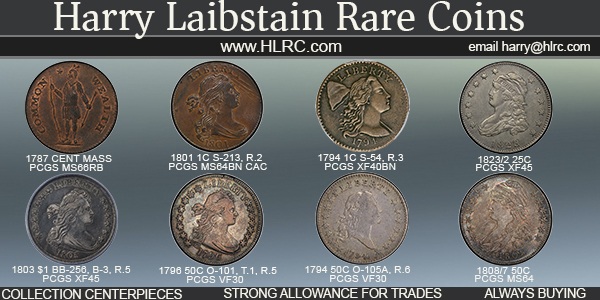
FAIRFAX COIN CLUB MEDAL
Hunter Hicks of the Fairfax Coin Club submitted this item about the club's medal. Thanks! -Editor
The Fairfax Coin Club, founded in 2017, has been finding ways to deepen its roots into the numismatic ecosystem, even though they are a relatively recently founded organization. One of their most recent projects was creating an official club medal.
The club medal, pictured here, had a mintage of 250. They have a 8.1 centimeter diameter and a thickness of 3 millimeters. While the medals have a deceptive silver appearance, they are actually made of a zinc alloy and then coated with an antiqued silver plating.
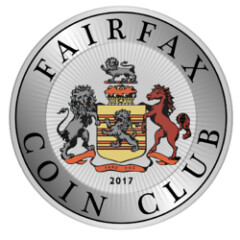 The club's creation of medals was not a rash decision. The club had imagined a potential club
medal since the start of the club back in 2017, and the design of the medal had been thoroughly
discussed. The obverse of the medal features the club emblem, which is heavily inspired by the
Fairfax County Coat of Arms. For the reverse design, the club held a design competition among
its members. The club enticed members to submit designs for the reverse side by offering a $50
auction credit to the winner of the chosen design.
The club's creation of medals was not a rash decision. The club had imagined a potential club
medal since the start of the club back in 2017, and the design of the medal had been thoroughly
discussed. The obverse of the medal features the club emblem, which is heavily inspired by the
Fairfax County Coat of Arms. For the reverse design, the club held a design competition among
its members. The club enticed members to submit designs for the reverse side by offering a $50
auction credit to the winner of the chosen design.
By the submission deadline on October 8, 2019, the club had received about 8 submissions. Designs by two club members, Elizabeth Sullivan and Marie Hoover, were chosen, and the two members then fused their designs. Their combined design features the outline of Virginia with a star inscribed over Fairfax. It also includes the club motto, "Sociis Nostris Discamus" meaning "Our Partners are Learned". This meaning can be taken in different ways. I personally interpreted it as suggesting that the learned experiences of older clubs and other collectors propels their success.
The medals were dispersed for free to all club members. If you aren't a club member, but would still like a medal, they can be purchased by anyone. The club is selling them for $5, plus shipping and handling. If you are interested, just send an email to fairfaxcoinclub@gmail.com.
I'm a member of the club, and enjoy having my medal. It's a great group, and anyone in the northern Virginia area should consider joining. -Editor
For more information about the club, see:
http://fairfaxcoinclub.com/
THE HISTORY OF REDESIGNING AMERICA'S MONEY
Ellen Feingold is curator of the National Numismatic Collection at the National Museum of American History, Smithsonian Institution. Kellen Hoard passed along her February 15, 2021 Politico article about past and potential future changes to American currency. Thanks. Here's an excerpt - be sure to read the complete article online. -Editor
Less than a week after taking office, the Biden administration announced it would restart Obama-era plans to redesign the $20 bill, replacing the portrait of President Andrew Jackson with that of abolitionist Harriet Tubman, after more than four years of uncertainty about the note's future. The decision has revived a fervent debate about who belongs on our currency, and whether the change is just another example of so-called cancel culture at its worst.
It's not hard to understand why some Americans might see the redesign as a radical break from tradition. For the past century, U.S. banknotes have featured a static set of Founding Fathers and presidents, government buildings and national memorials. This 20th-century consistency created the illusion that significant design alterations would sever our currency's ties to its past.
But this is a misperception. In the 1800s, currency redesigns were not at all uncommon. In fact, banknotes changed regularly, and featured a vibrant range of people, scenes and symbols. The United States did not have standardized designs depicting only a handful of political figures until the 1920s.
What this history suggests is that we should not shy away from rethinking our currency today. Instead, the new $20 bill should be merely a starting point, encouraging us to think more expansively and creatively about the images that appear on our money—as we have in our past and as other nations do today.
Money, after all, is a powerful means of communication. It is a missive we send around the world—an ambassador of sorts. It is also part of our national identity and can help to remind us of our common purpose. Our money should not only reflect our country's origins, but also who we have become over the past 250 years—as well as who we aspire to be.
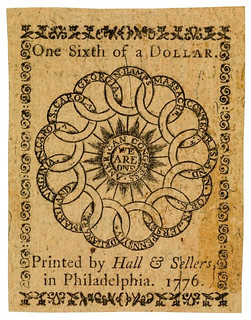 Our founders knew that monetary designs could help to inspire a sense of unity. Some of the first notes issued by the Continental Congress in 1775 featured a striking design with 13 interlocking rings (representing the 13 colonies) surrounding the message "WE ARE ONE." The founders also shied away from including potentially divisive political and military leaders on our national coins, instead choosing symbols of freedom and a burgeoning national identity. The first coins made by the U.S. Mint in 1792 featured Lady Liberty, and she regularly appeared on U.S. coins throughout the 19th century. It was not until 1909 that Abraham Lincoln became the first historic American figure to appear on a U.S. coin, 44 years after the end of the Civil War.
Our founders knew that monetary designs could help to inspire a sense of unity. Some of the first notes issued by the Continental Congress in 1775 featured a striking design with 13 interlocking rings (representing the 13 colonies) surrounding the message "WE ARE ONE." The founders also shied away from including potentially divisive political and military leaders on our national coins, instead choosing symbols of freedom and a burgeoning national identity. The first coins made by the U.S. Mint in 1792 featured Lady Liberty, and she regularly appeared on U.S. coins throughout the 19th century. It was not until 1909 that Abraham Lincoln became the first historic American figure to appear on a U.S. coin, 44 years after the end of the Civil War.
Historic figures began to appear on circulating banknotes in the early 1800s, but they were far from the standard or dominant imagery. Early American banknotes featured a dizzying array of allegorical and historic figures, scenes and messages. This remarkable diversity is a reflection of the wide range of institutions that issued currency. At the time, it was not the federal government that produced these bills, but more than 8,000 private banks and businesses, which had the freedom to determine what and whom to depict.
To read the complete article, see:
A Harriet Tubman $20? That's Just the Beginning
(https://www.politico.com/news/magazine/2021/02/15/tubman-america-history-redesigning-money-468839)
SMITHSONIAN TO EXHIBIT TENINO'S WOODEN MONEY
Meanwhile, the National Numismatic Collection has reached out to Tenino, WA for an example of their COVID-era wooden money. -Editor
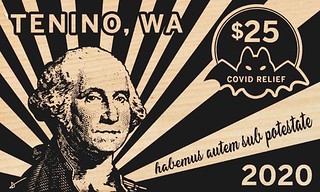 Tenino's response to the pandemic — widely-publicized wooden scrip similar to money that was distributed to residents — may soon be enshrined in the Smithsonian National Museum of American History.
Tenino's response to the pandemic — widely-publicized wooden scrip similar to money that was distributed to residents — may soon be enshrined in the Smithsonian National Museum of American History.
Earlier this month, a curator of the museum reached out to the small town asking to display some of the wooden currency, which was aimed at helping keep the local economy afloat during a global emergency.
"It's still kind of surreal," Mayor Wayne Fournier said Friday, noting that other museums have also been reaching out regarding the unique scrip program. "But nothing to the level of the Smithsonian, you know? The Smithsonian, that's America's museum."
The Smithsonian has already chronicled Tenino's wooden scrip program from nine decades ago. As far as Fournier knows, 2020 was the first time a local government had spearheaded a scrip program. But during the Great Depression, Tenino's chamber of commerce ignited a similar program. So when the pandemic hit, Fournier said, Tenino simply had to "dust that idea off."
Hearing from the Smithsonian is exuberating, but Tenino has been getting love from more than one prestigious institution during the course of the pandemic.
The town has already given some wooden tokens to two other museums — one in New York and the other in Canada. And Fournier was invited to partake in Temple University's "The Critical Dialogue" lecture series to discuss monetary theory. He's also been talking to grad students in California who are studying micro-currency concepts.
"And the nation of Japan contacted us to get permission to put our story in their civics textbook," Fournier added. "It's outrageous."
When asked if monetary theory is something he's interested in pursuing, Fournier said he's unsure. He would love to do a Ted Talk, although he acknowledged that the Smithsonian is perhaps a more prestigious honor.
"The Smithsonian. I don't know how it can get any better than that," Fournier said, laughing. "It's all downhill from here for me."
To read the complete article, see:
Smithsonian Looks to Enshrine Tenino's Wooden Money
(http://www.chronline.com/news/smithsonian-looks-to-enshrine-tenino-s-wooden-money/article_e2d96fe8-6ff2-11eb-a31e-2f2605763319.html)
READERS LOVE THE LIBBY APP
While local libraries may not have a decent selection of numismatic literature, they do hold a wealth of research and reading material. A popular app makes those resources easier to access on mobile devices. But is it too much of a good thing for the libraries? -Editor
On the surface, there couldn't be a more wholesome story than the meteoric rise of the Libby app. A user-friendly reading app becomes popular during the pandemic, making books cool again for young readers, multiplying e-book circulation and saving public libraries from sudden obsolescence.
But the Libby story is also a parable for how the best-intentioned people can build a beloved technological tool and accidentally create a financial crisis for those who need the tech most. Public librarians depend on Libby, but they also worry that its newfound popularity could seriously strain their budgets.
Before 2017, e-books were still pretty niche, and checking out library e-books was torture. In 2016, just over a quarter of Americans had read an e-book within the previous year, according to a Pew Research Center survey. Not many people even knew their libraries offered digital books. Overdrive — the digital marketplace for publishers and libraries, and the creator of Libby — was (and still is) clunky, slow and unintuitive. Overdrive hit just under 200 million checkouts in 2016; in 2020, that number more than doubled, surpassing 430 million.
Few noticed when the cute, friendly virtual library app launched in 2017. Libraries are never very good at selling themselves, and neither is Overdrive. But the app's seamless, user-friendly experience was so exceptional that it spoke for itself. Libby became a cult favorite for book lovers and dedicated librarygoers, and almost every public library in the country, already dependent on Overdrive for their growing digital collections, loved that they could make reading online a little bit easier. It was the public library's best-kept secret.
And then in March 2020, when libraries closed their doors and books sat gathering dust, the Libby app became so much more than a cute reading tool. People turned to digital books and were delighted to discover they were so much simpler than remembered. You could access the web app anywhere on any computer, and everything synced to a phone app as well. You could download library books to Kindle. You never needed a password. You could use more than one library card. Libby downloads increased three times their usual amount beginning in late March. E-book checkout growth and new users on Overdrive both increased more than 50%.
Libby had helped to save libraries.
It had also accelerated a funding crisis. Public library budgets have never been luxe, and book acquisition budgets in particular have always been tight. Though it may seem counterintuitive to readers, e-books cost far more than physical books for libraries, meaning that increased demand for digital editions put libraries in a financial bind.
To read the complete article, see:
Libby is stuck between libraries and publishers in the e-book war
(https://www.protocol.com/ebooks-libraries-libby-overdrive-publishers)
Check it out! (pun intended) I gave it a try. It's pretty easy to install and set up. I was able to immediately get a temporary library card for my local branch, but needed to go over there to show them a photo ID to get my permanent card. It's only a few minutes away, so I stopped while out running another errand. Every library is different (so your mileage may vary), but there are quite a number of useful resources available in addition to ebooks, such as Consumer Reports Online, newspaper archives including The New York Times and Wall Street Journal, Legal Forms, Morningstar stock reports, Westlaw, and more. -Editor
For more information on the Libby app, see:
https://www.overdrive.com/
LOOSE CHANGE: FEBRUARY 21, 2021
Here are some additional items in the media this week that may be of interest. -Editor
Harriet Tubman Note History
An article by Daniel Baumbach in the February 18, 2021 CoinsWeekly examines the history of the plans to place Harriet Tubman on a U.S. banknote. -Editor
To read the complete article, see:
A Former Slave Instead of a Slave Owner? - News in the Case of the 20 Dollar Banknote
(https://coinsweekly.com/a-former-slave-instead-of-a-slave-owner-news-in-the-case-of-the-20-dollar-banknote/)
See also:
https://tubman20.com/
Horrifying Medieval Book Curses
Scott Miller passed along this great 2016 Atlas Obscura article about horrifying medieval book curses. Worth another look. -Editor
 "These curses were the only things that protected the books," says Marc Drogin, author of Anathema! Medieval Scribes and the History of Book Curses. "Luckily, it was in a time where people believed in them. If you ripped out a page, you were going to die in agony. You didn't want to take the chance."
"These curses were the only things that protected the books," says Marc Drogin, author of Anathema! Medieval Scribes and the History of Book Curses. "Luckily, it was in a time where people believed in them. If you ripped out a page, you were going to die in agony. You didn't want to take the chance."
"If anyone take away this book, let him die the death;
let him be fried in a pan; let the falling sickness and
fever size him; let him be broken on the wheel, and
hanged. Amen."
To read the earlier E-Sylum article, see:
THE HISTORY OF BOOK CURSES
(https://www.coinbooks.org/esylum_v19n46a46.html)



